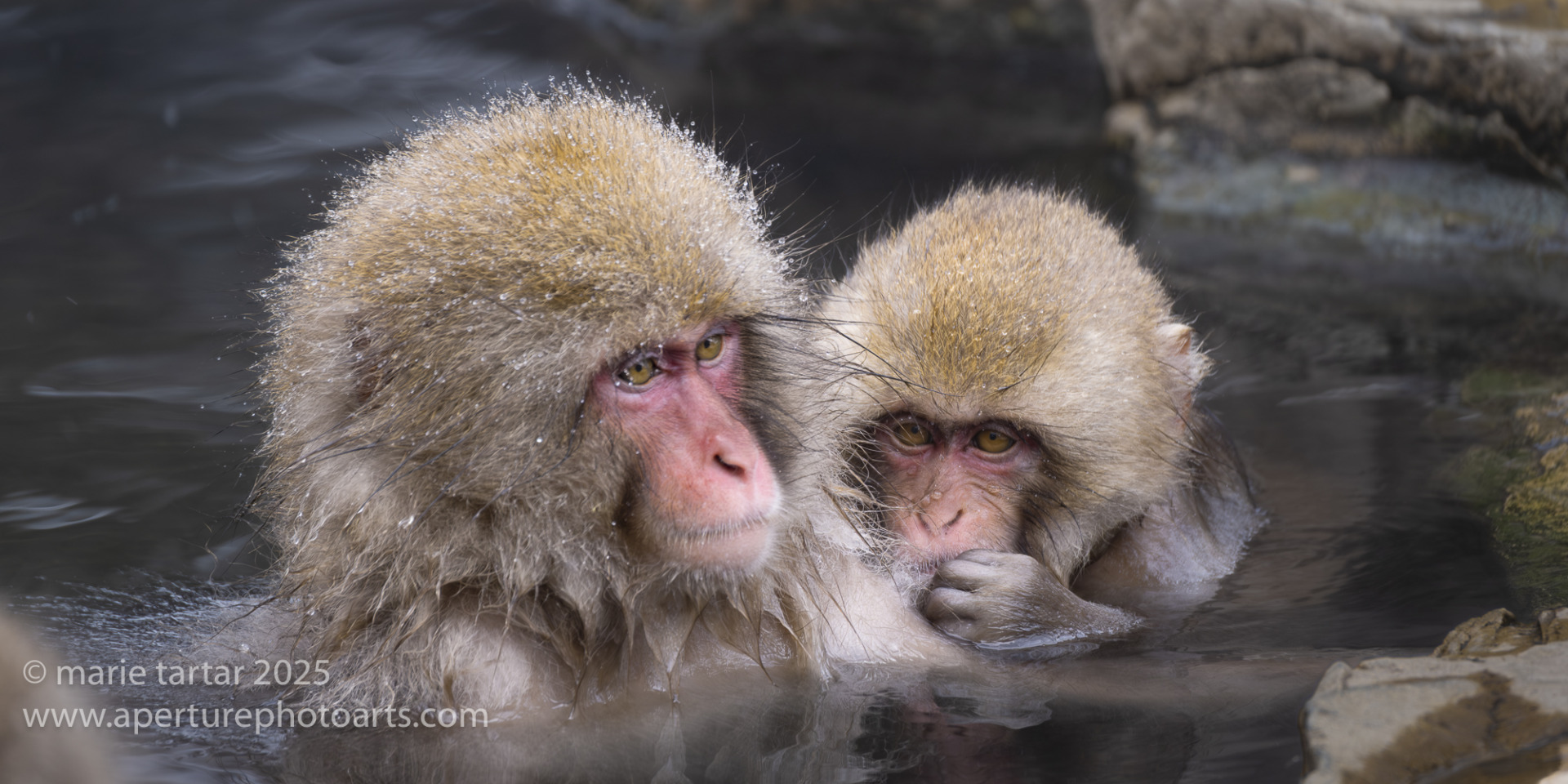
In 2018, Steve, Greg and I were 50% of the guests on a small group winter wildlife photography trip in Japan, under the auspices of Jack Graham. As I wrote at the time, paraphrasing Dickens, “It was the best of trips, it was the worst of trips.” A series of physical issues impacted my full enjoyment of the trip, although I still had a great time, despite falling on ice and spraining an ankle, a hacking cough that left my chest wall aching and worst of all, throwing out my back by coughing at the wrong moment (leaning over a low table, making one of an endless series of hot teas, trying to soothe the insistent and mysterious cough, which left me exhausted but not otherwise feeling ill).
That trip, seven years ago, introduced us to the winter wildlife wonders of Japan, mostly in Hokkaido, with a half-day with the snow monkeys near Nagano. It included short stays in Tokyo, Kyoto and near Mt. Fuji, with the wildlife photography compressed into a day with the red-crowned cranes, a morning on a boat in Rausu to photograph the sea eagles and another with the whooper swans of Lake Kussharo. In many ways we were lucky, with great conditions for our limited time with the snow monkeys, the whooper swans and the sea eagles, but were plagued with snow so thick it was hard to see through for our one day with the red-crowned cranes.
We knew we wanted to return…eventually. Our route to this trip was a little circuitous. Looking back, I see we initially signed up with deposits in July 2018 for winter of 2020. At the time, I was writing The Traveling Photographer articles for Photo Focus, an on-line e-zine, including one on choosing a winter wildlife trip to Japan. I compared a selection of competing trips, including Martin Bailey. He is a Brit who has lived in Japan for decades. A competing dive trip to Indonesia arose that led us to transfer our deposit to a different trip Martin was running, to Namibia in June 2020. We had a fabulous dive trip to Indonesia, which ended in late February 2020, just before all pandemic hell broke loose and shut the world down. Thanks to the pandemic, we ultimately ventured with Martin to Namibia in 2022. While on that trip, we were persuaded by Martin’s descriptions of his Hokkaido winter tours, to sign up for the winter of 2024. But trying to capitalize on an embarrassment of opportunities, we ultimately postponed to 2025, when we realized we’d have trouble, while still working, fitting in snorkeling with sperm whales in Dominica (organized by our friend Cindi, requiring a permit and not offered every year), Hokkaido and our annual Sedona film festival at the end of February. Thankfully, Martin was accommodating and let us shift to this year, after Steve and I semi-retired in March 2024 and had more breathing room to organize our travels, fitting more occasional work in between travel.
We had been a little leery of the group size (15) and the prospect of traveling on a bus, but this trip proved to be wonderfully well-organized, comfortable and optimized for wildlife photography. On our prior small group tour, there were 7 of us crammed in a van, including a driver/guide (we’ll call her Sadistic Susan) who proved not to be very service-oriented. On the bus, we could keep our camera bags nearby, our long lenses at the ready and had plenty of room to spread out. Martin has impressive logistical support on these trips in Yukiko Higuchi, who stream-lined our check-ins and check-outs at the hotels where we stayed, guarded bags at the airport and generally facilitated our enjoyment in myriad ways.
Along the way, another dilemma arose. We’d planned a week-long aurora-chasing trip to Iceland for October 2024, trying to capitalize on this peaking aurora cycle. However, months before, we unexpectedly purchased a share of a fractional apartment in Paris and selected two weeks in October to be our fixed weeks (the other two rotate), filling up October. That’s how this turned into an around-the-world trip. We wanted to go to Iceland during this aurora cycle and going in February would hopefully let us explore more ice caves and see frozen waterfalls. Both Hokkaido and Iceland would require the same extreme winter wardrobe and save us from flying back and forth to Japan, only to fly in the opposite direction back and forth to Iceland. Thus our itinerary was set: San Diego-Tokyo, Tokyo-London, London-New York City, NYC to San Diego, all non-stop. We picked up separate Icelandic air tickets and overnighted in London at Greg’s family’s flat. The tariff for a One World around-the-world business class fare was steep, around 10 K, but easier to justify considering that coach tickets on JAL’s non-stop from San Diego to Tokyo run around 5 K! The only wrinkle: I couldn’t book the longest segment, 14 hours from Tokyo to London, in business, only coach.
Our group consisted mostly of Aussies and Americans. Sydney was represented by Robin (Moon, a Sony Ambassador on holiday) and her friend and travel companion, Sara, as well as Phil. Angela and Lloyd live in Brisbane and rounding out the Australian contingent was Paul, who lives in Torquay, near Melbourne. In addition to Greg, Steve and me from the US, there was another older retired couple from Boulder, Colorado (Donna and RC), a retired lawyer from Minneapolis, Bill and a Filipino transplant living in Queens, Benito. Canada was represented by Gail from Vancouver and Deji from Toronto.
We met up in the Excel Hotel in Tokyo’s Haneda airport. Steve, Greg and I flew in several days early to enjoy some good meals and company in Tokyo, including okonomiyaki with my cousin Nina and a wonderful Italian seafood meal near Tsukiji with Mari (Hideo was attending a memorial service for his mentor). Our friend Mayde hooked us up with Shima Steak, a hidden treasure in GInza, where we had amazing oysters and “the best steak of (y)our lives”.
Friday, January 24-Saturday, January 25, 2025
We were finally en route to Japan, after extended packing and planning over the preceding month. The recent opening of a Chase Sapphire lounge significantly upgraded our travels via San Diego airport. Best yet, besides being nicely decorated and huge compared to the Aspire lounge (which aspired to be a lounge but was consistently oversubscribed and crowded with minimal and mediocre food), we can use it no matter which carrier we travel with.
It was too early to sample the open bar and we were full enough from trying to eat all of our leftovers that we didn’t sample much of the food offerings, but they appeared clearly superior.
I must have been tired from all of the preparations (including daily trips to REI for 3 consecutive days) as I slept intermittently, initially not finding much to engage me among the movies. But after a nap (lie-flat seats truly are the greatest travel luxury), I finally watched an adorable film from 2021, Marcel the Shell with Shoes On, which Greg had recommended a while ago.
The Last Mile, a Japanese thriller, was enthralling, set in an Amazon-like warehouse which is terrorized by exploding packages and a race to identify other compromised deliveries.
For our three nights in Tokyo, we stayed in the Mercure Tokyo Hibiya, near the Shimbashi station and Ginza. Somehow, Steve and I had booked a room allowing us club access. This proved to be a calm, beautifully appointed, Art Deco-inflected lounge on the 3rd floor with design books and a serve yourself latte machine, which we made liberal use of in the mornings.
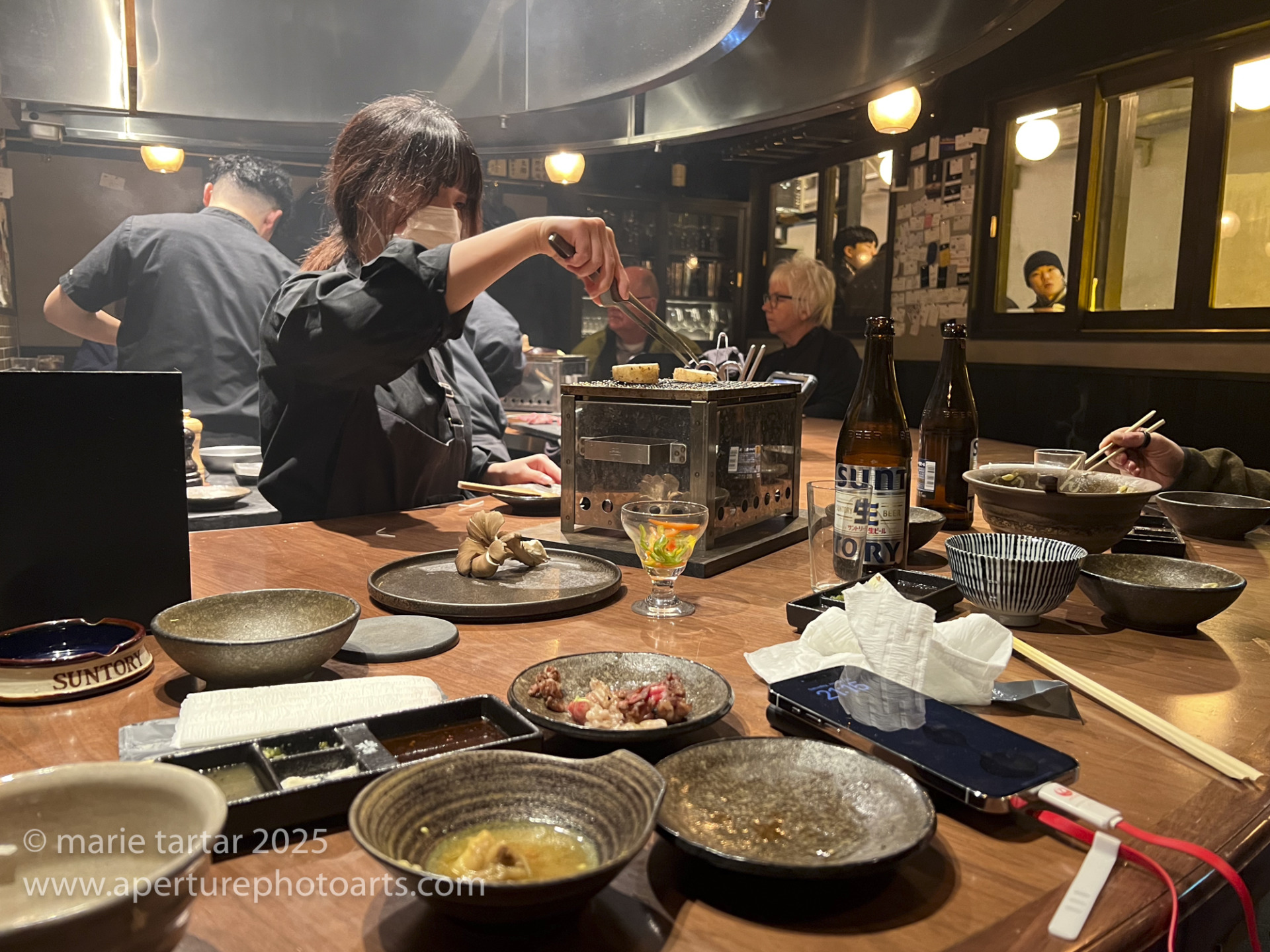
We wandered down the street from the Mercure and landed in this yakiniku joint for dinner our first night.
Sunday, January 26, 2025
We stretched our plane-cramped legs, walking north toward Tokyo Station to meet my cousin Nina and her friend Nana (whose work is starring with a friend on a YouTube comedy show) for an okonomiyaki lunch at Okinomiyaki Kiji, suggested by our friend Mari. On the way, we passed a museum we had never visited before, into which we ducked after lunch for a show pairing two French artists from different centuries, Henri de Toulouse-Lautrec and contemporary performance artist and photographer Sophie Calle. The show, entitled Absences, is the first exhibition after the recent re-opening of the Mitsubishi Ichigokan Museum. The theme was suggested by Sophie Calle, who was originally to travel to Tokyo for a show planned for 2020 called 1894 Visions: Odilon Redon and Henri de Toulouse-Lautrec, planned as part of MIMT’s 10th anniversary celebrations. The pandemic interfered and the museum closed for renovations until recently. I thought the connection between the artists was a little tenuous but the museum’s website offered this analysis:
“Having spent many years reflecting on loss and absence, Calle suggested “absence” as the main theme of the collaboration. As it happens, Toulouse-Lautrec once made an intriguing observation on the obverse of absence—namely, existence:
“Only the human figure exists; landscape is, and should be, no more than an accessory…”
Uttered during an 1897 trip in response to a companion’s admiration of the Amboise landscape, these words epitomize a life spent gazing deep into the souls of his fellow human beings to investigate the very nature of existence in his works.
Now, both Lautrec and his subjects are absent; only the works themselves exist. Calle’s proposed theme of “absence” offers the opportunity to explore the existence of exhibitions and museum activities in which the original parties have no agency.”
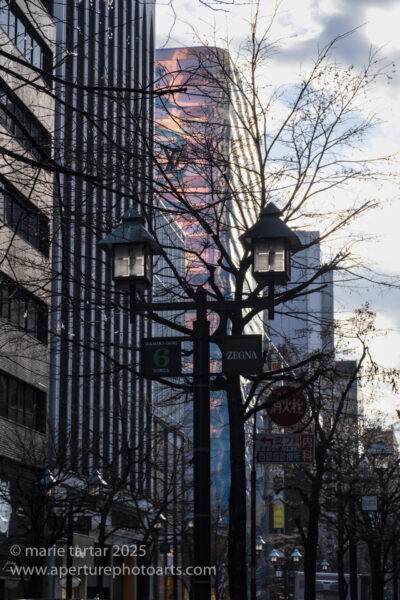
Ginza, Tokyo, near sunset. On Sundays, Hokōsha Tengoku or Hokoten, meaning “pedestrian heaven” is in effect, with the main street, Chuo Dori, closed to cars.
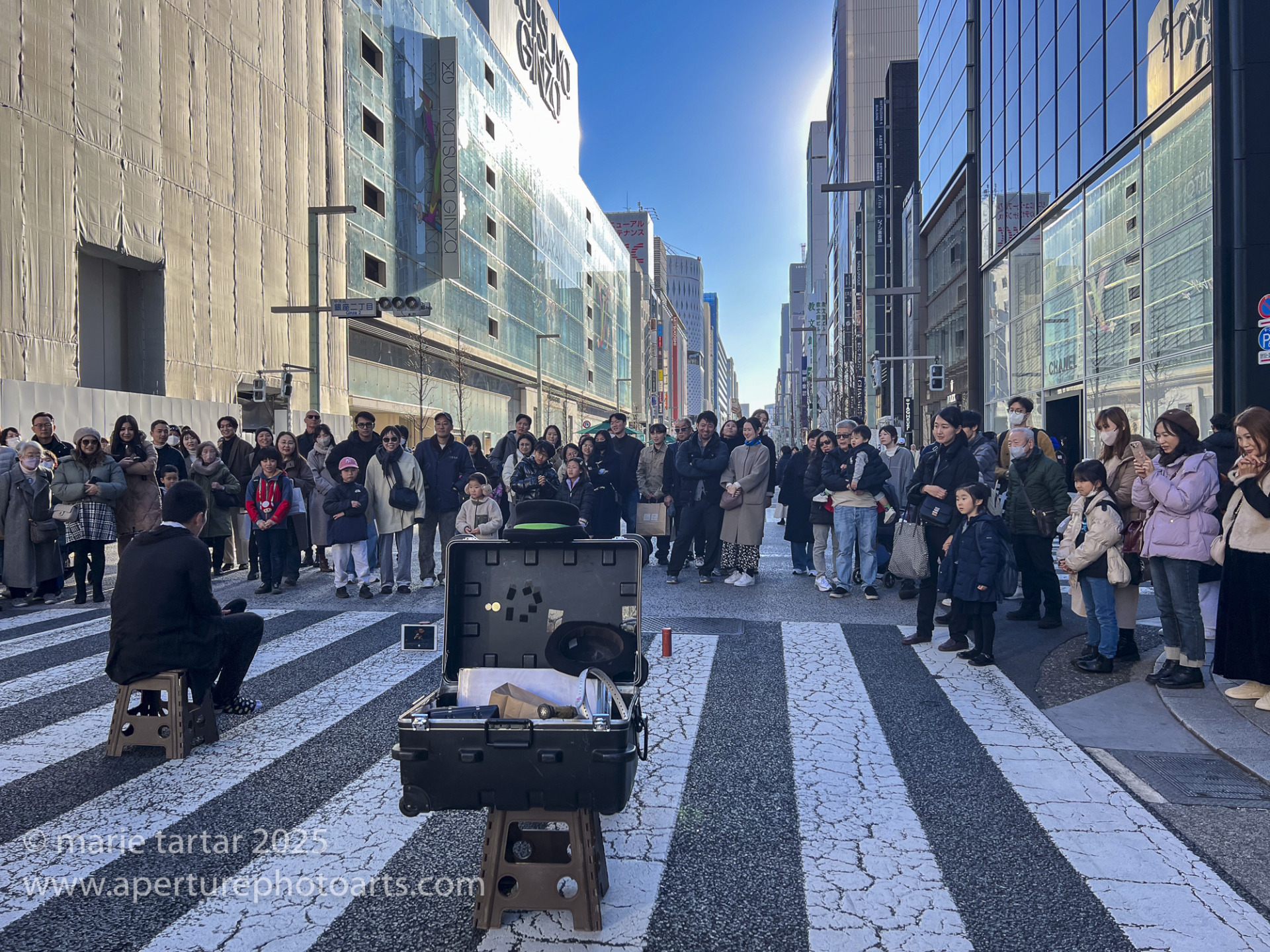
A street performer draws a large crowd on a Sunday in Ginza, when Chuo Dori is closed to car traffic.
We also walked to dinner, near Tsukiji (the traditional fish market, which has been relocated since our last visit in 2017) to meet our friend Mari at an Italian seafood restaurant, Trattoria Tsukiji Paradiso, where we shared a delicious and abundant meal of enormous oysters, prosciutto salad, pasta with shellfish and sea robin with cherry tomatoes.
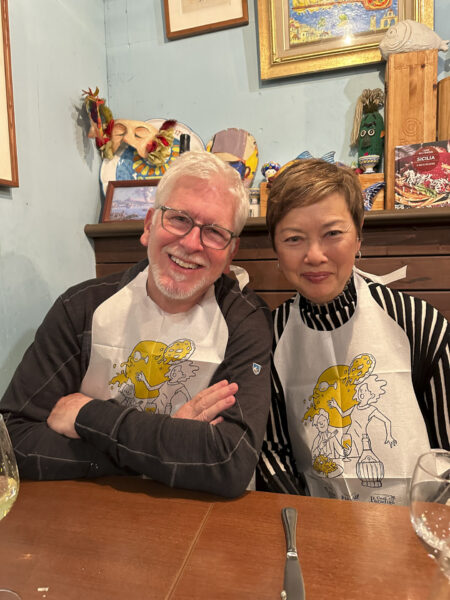
Bibs on, ready to indulge in steaming platters of Italian seafood. Photo courtesy of our friend Mari.
Monday, January 27, 2025
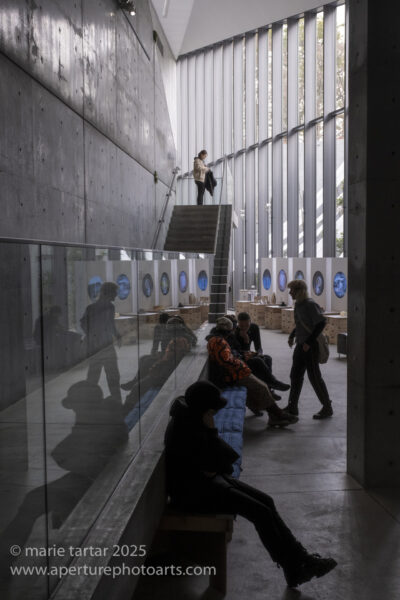
21-21 Design Sight is a museum collaboration between architect Tadao Ando and fashion designer Issey Miyake.
We again logged many steps, west to the 21-21 Design Sight Museum, which was featuring a literal shit show called pooploop, focusing on excrement and the processes of recycling and creation in nature.
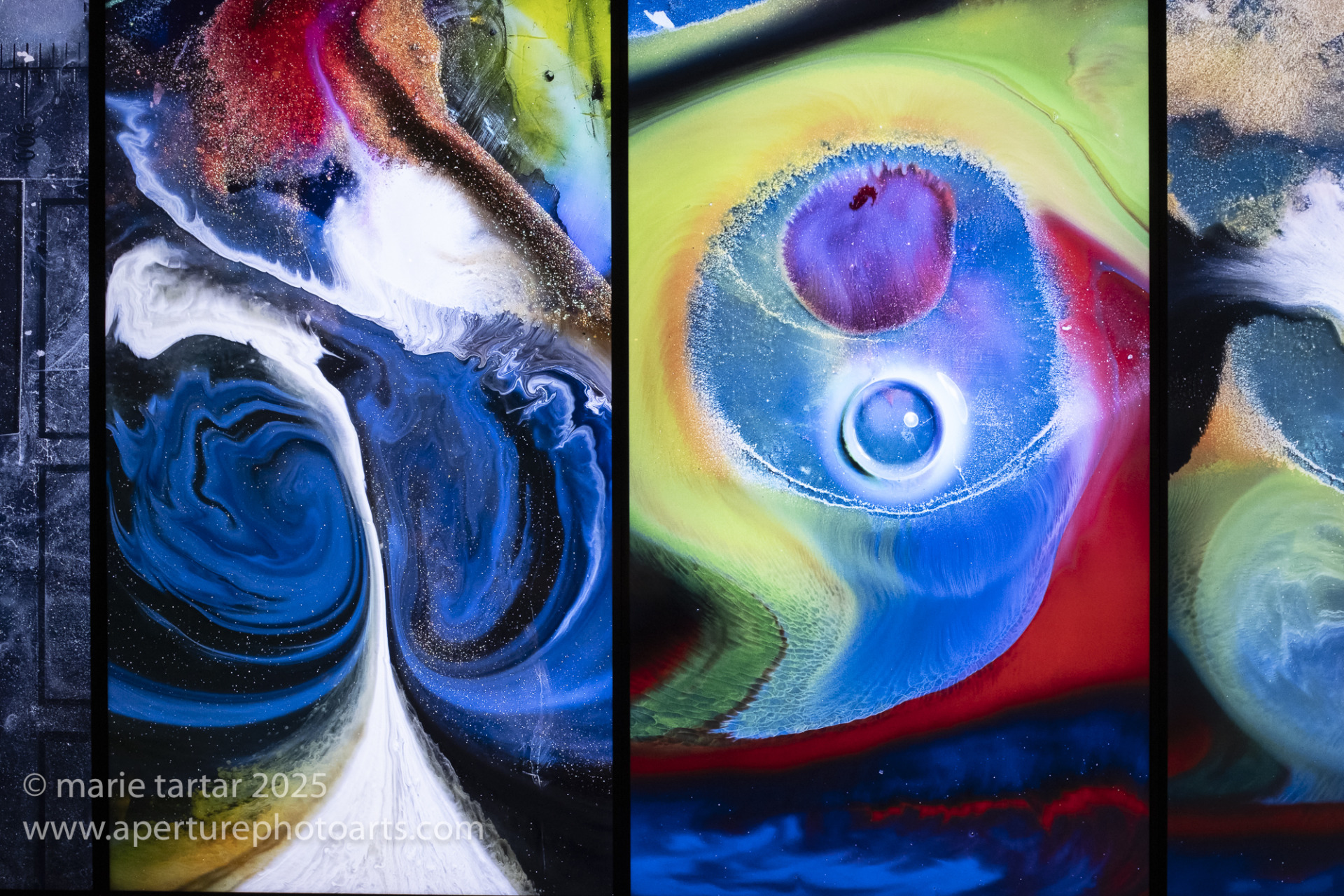
Scenes from pooploop at 21-21 Design Sight: discarded liquids of differing densities swirl in Akiko Nakayama’s Alive Painting video piece.
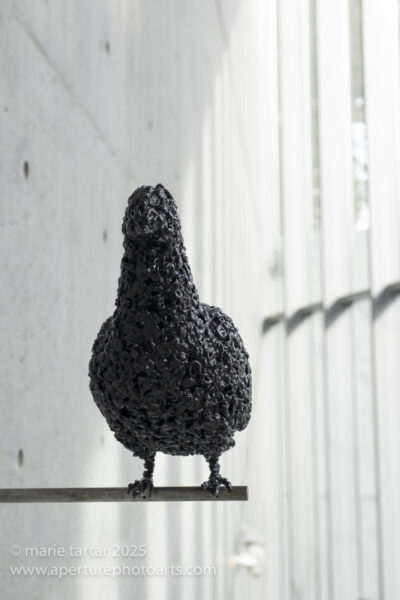
More scenes from pooploop at 21-21 Design Sight:: Poop in the form of pigeon droppings, upcycled into an art object (2016) by Koro Ihara.
The Suntory Art Museum (which we had never been to) was our original destination, but proved to be closed. Lunch was pieced together in the Hibiya Foodhall, with salads from a prepared food deli and onigiri from another vendor. After finishing our salads, as I was unwrapping an onigiri, we were asked politely, but firmly, not to eat them at our table in the deli.
We would quickly encounter this same insistence on “the rules” at the Idee coffee shop. We attempted to order only 2 lattes, one for me and one for Greg and nothing for Steve, who just wanted to sit. We were gently but insistently forced to order Steve a coffee in order to claim a table on their patio.
After a long walk back toward Ginza, we finally found Steve beard scissors, at Takashimaya, after deciding $140 for a pair was a little pricey at Kuji in the Roppongi shopping center.
This put us only 4 blocks from our dinner destination, which Mayde had described as “hidden” and “the best steak of your life”, both quite accurate descriptions. The elevator down a level from the street opened onto a pile of boxes. “This can’t be it”, we mused. Back up in the elevator we went to recheck the sign on the street. No, that was right. We hadn’t noticed a door off to the left which opened from the storage area into the small restaurant. We were seated at the counter, with a good view of the bustle of the 5 chefs at work. Greg and I had 2 amazing oysters each, which were superb. The oysters did not even need any enhancement beyond lemon juice, although the tomato chutney provided was delicious. I opted for a 100 gram sirloin, while Greg went for the 150 gram version and Steve had a similarly sized filet. They were perfectly cooked to medium rare perfection, juicy and tender, over a rotisserie. Mrs Shima sent us home with cheesecakes.
Tuesday, January 28, 2025
We visited another museum new to us in the morning, this one featuring a private ceramics collection. The Tomo Museum (full name Kikuchi Kanjitsu Memorial Tomo Museum) was established by Kikuchi Tomo (1923-2016) in 2003. The name memorializes her father, Kikuchi Kankitsu (1885-1967), an entrepreneur who lived where the museum is today. The space is small but the collection is beautifully lit and displayed, the work of American Richard Molinaroli, who Tomo met in Washington DC at the Smithsonian. Molinaroli designed the 1983 Smithsonian exhibition Japanese Ceramics Today-Masterworks from the Kikuchi Collection.
Back in GInza, we found ourselves at lunch at Dover Street Market. I tend to find more to eat at their affiliate, Rose Bakery, than I do to wear but it is always fun to look at the outrageous styles and proportionate prices.
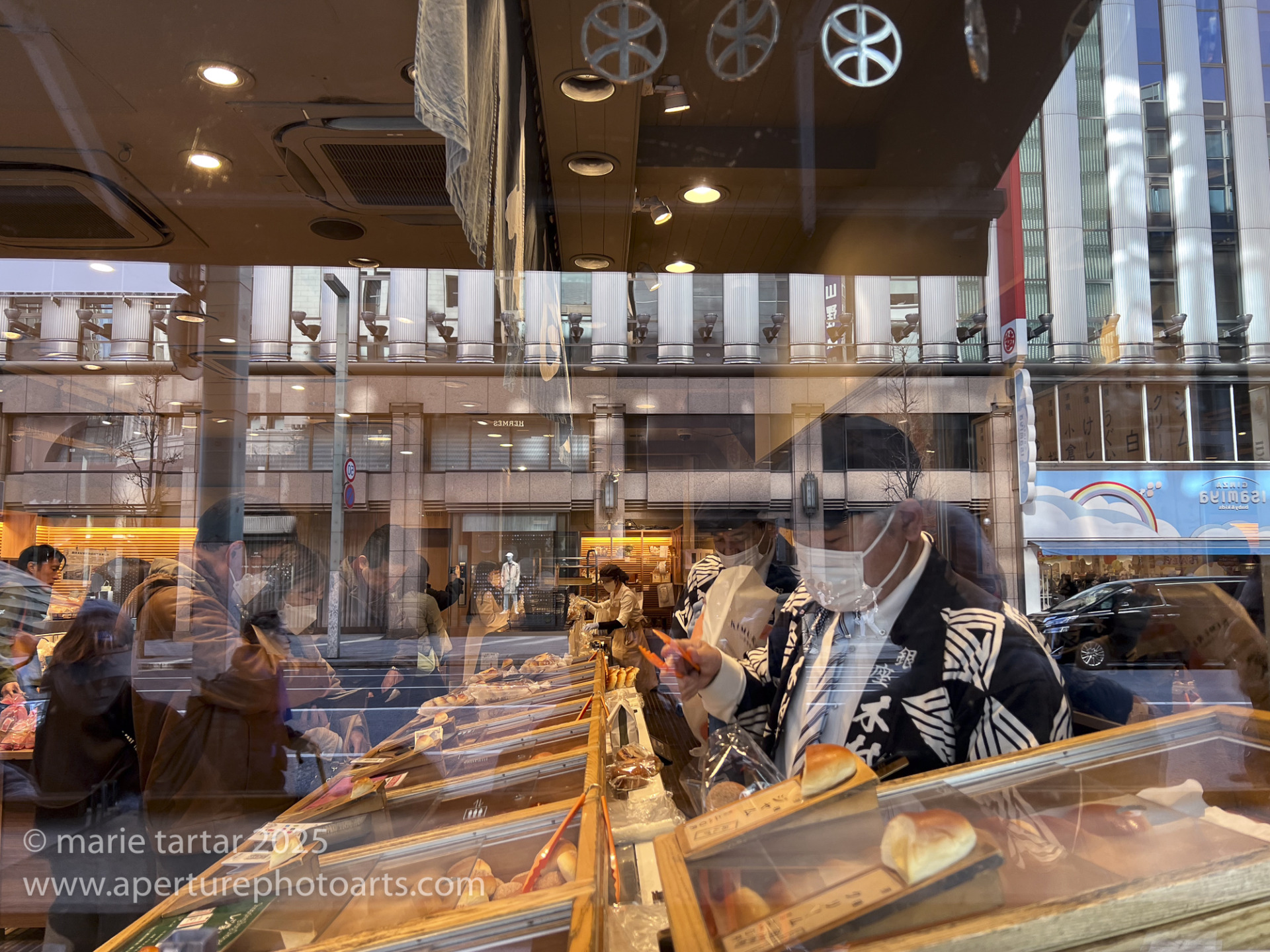
We were too full after our delicious lunch at Rose Bakery to partake of the bakery goods at GInza Kimuraya, the oldest bakery in Japan, recommended by our friend Mayde.
We rolled our suitcases to the Shimbashi subway station and managed to transfer to the train to Haneda, overshooting the transfer by 2 stops (Greg didn’t believe me when I said we were at the transfer station!)
We met Martin and the group for dinner at Flyer’s Table, the restaurant inside the Haneda Excel Hotel, from which we were poised for our earlier departure to snow monkey country the next morning. I had the tasty fisherman’s stew, worth the extra-long wait the staff warned me about.
Wednesday, January 29, 2025
We rose early, in the dark, to check out and load on to a bus to take us to Shibu Onsen, a hot springs village close to our destination, Jigokudani Monkey Park, within Jōshin’etsu-kōgen National Park, a volcanic mountainous region. On our prior trip, we took the Shinkansen train from Tokyo to Nagano, requiring almost an hour drive to the monkey park. Although Nagano was nice, I really enjoyed the traditional Japanese Hotel Kokuya and its variety of onsens (both inside and out) and the less than 10 minute drive from Shibu Onsen.
It was a 3.5 hour drive northwest, with snow-capped Fuji-san visible intermittently for the first hour or so.
After fortifying our cold weather armature and redistributing our gear, we walked into the Monkey Park. The 1.2 mile muddy and snowy track received fresh snow during the afternoon. For this afternoon traverse, I used only the mini-spikes built into my Canadian Pajar boats, which were adequate, with only one minor sideways slip on one foot on the way.

Adult and young Japanese macaques (Macaca fuscata) huddle together in an onsen or hot spring in Jigokudani Monkey Park.
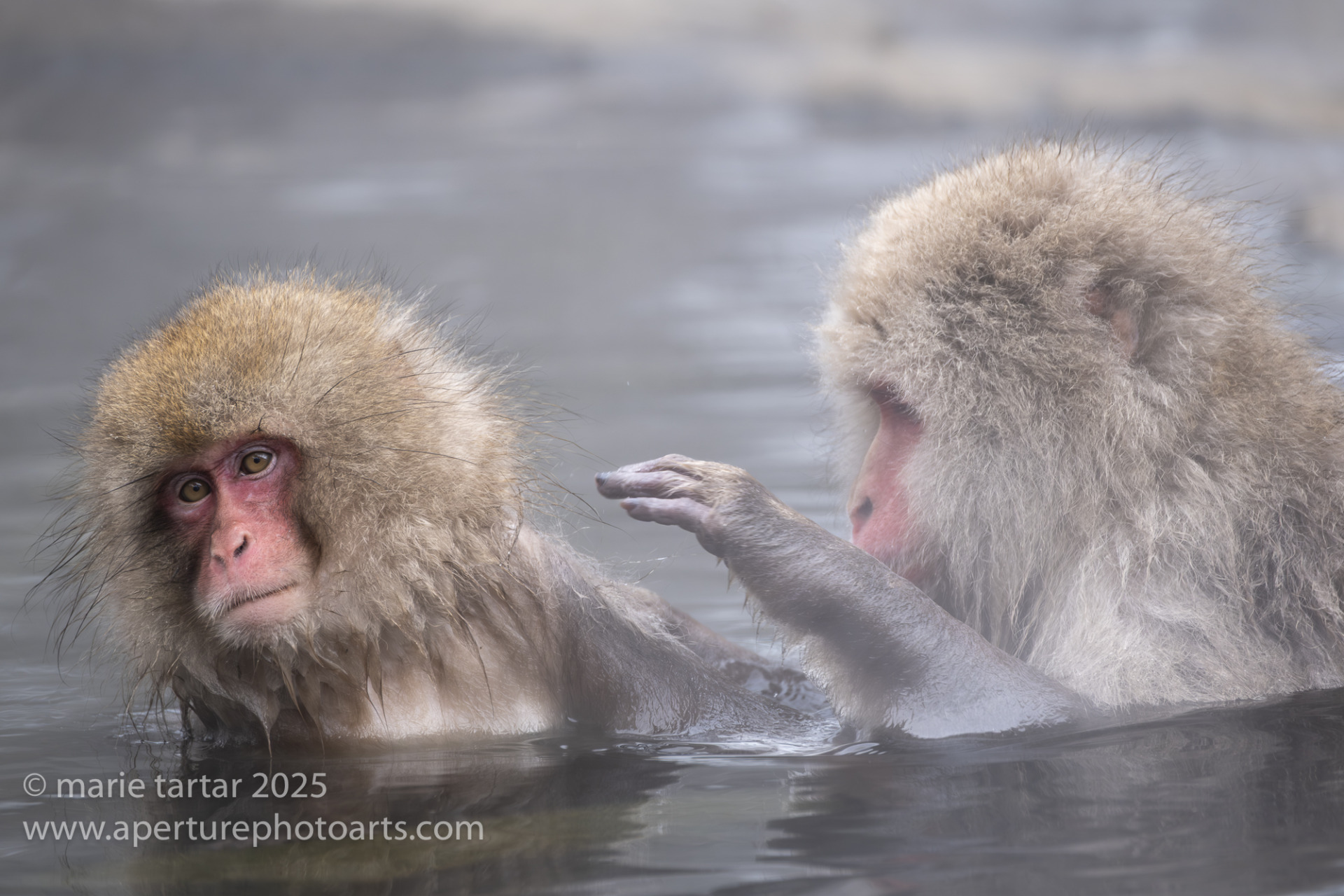
The snow monkeys spend much of their time together grooming each other, picking out lice and parasites matted in their thick fur.
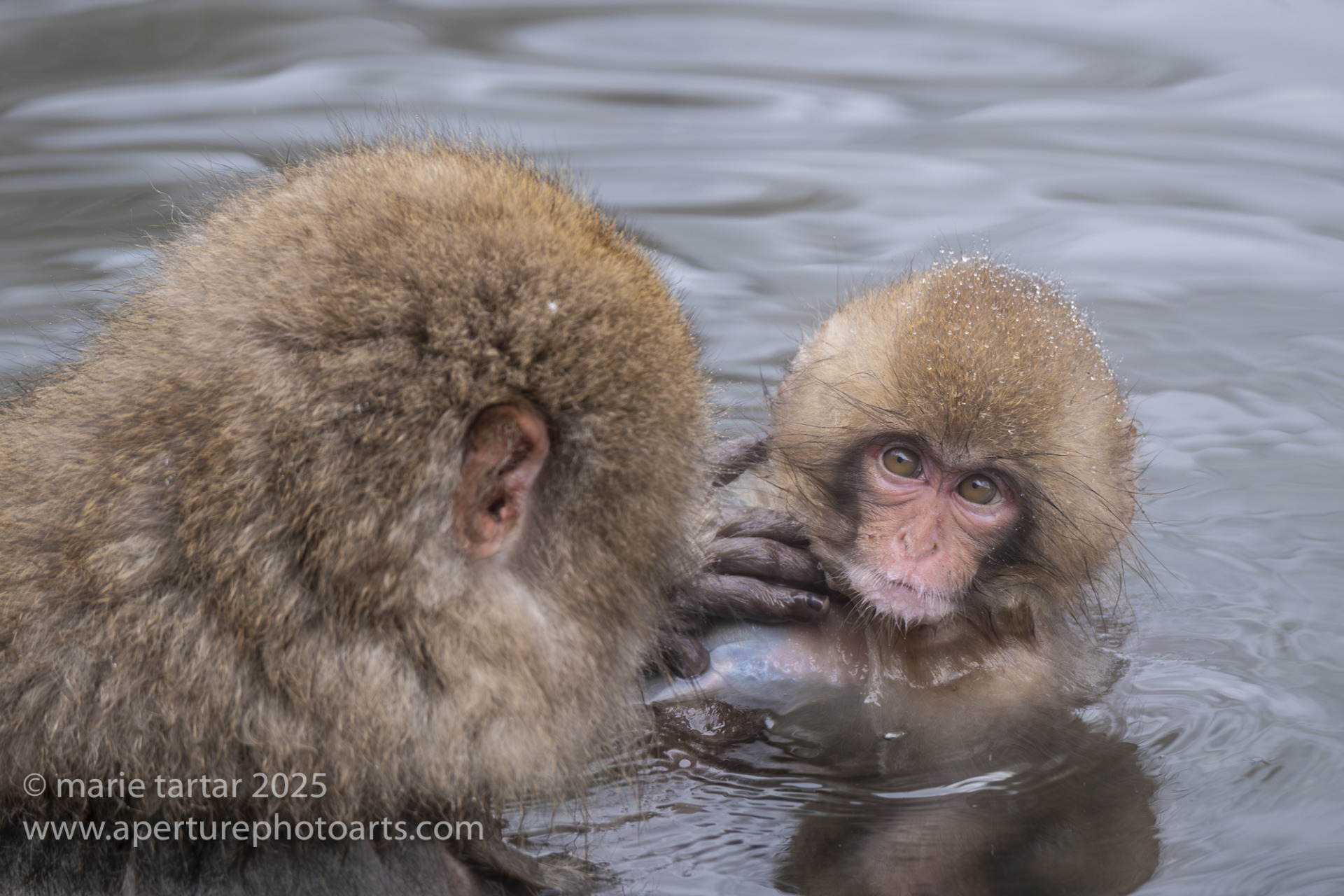
A young macaque looks a little alarmed as a larger and older snow monkey probs for dead leaves, lice, lice eggs or other detritus which may be caught in their thick fur.
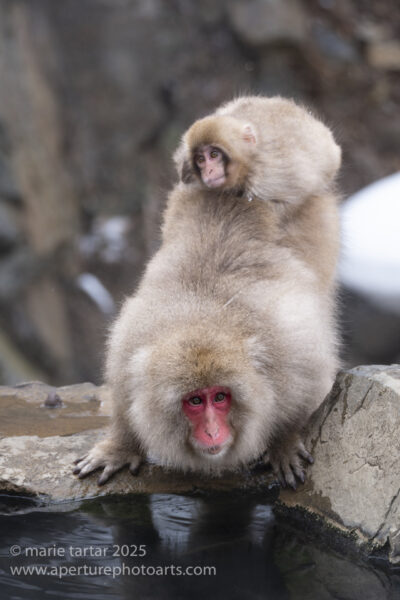
Drinking from the hot spring looks a little more difficult with a baby on your back. Snow monkey infants are carried on the mother’s stomach for the first month and afterwards, on the back for up to a year.

Snow started up again during our first afternoon photographing the snow monkeys! The snow monkeys are the most northern dwelling primates in the world. The colder the environment in which they dwell, the thicker is their fur.
These Japanese macaques ((Macaca fuscata) are ridiculously appealing, scampering about, grooming each other, eagerly digging in the snow for seeds thrown by attendants, tumbling through the snow, chasing each other. On our prior trip in 2017, Sadistic Susan (our guide) opined that a few hours would be sufficient time with the monkeys. We spent only a morning with them. Luckily, we had fresh snow and conditions were good, but we disagreed…vehemently…with her assessment that 2 hours was sufficient.
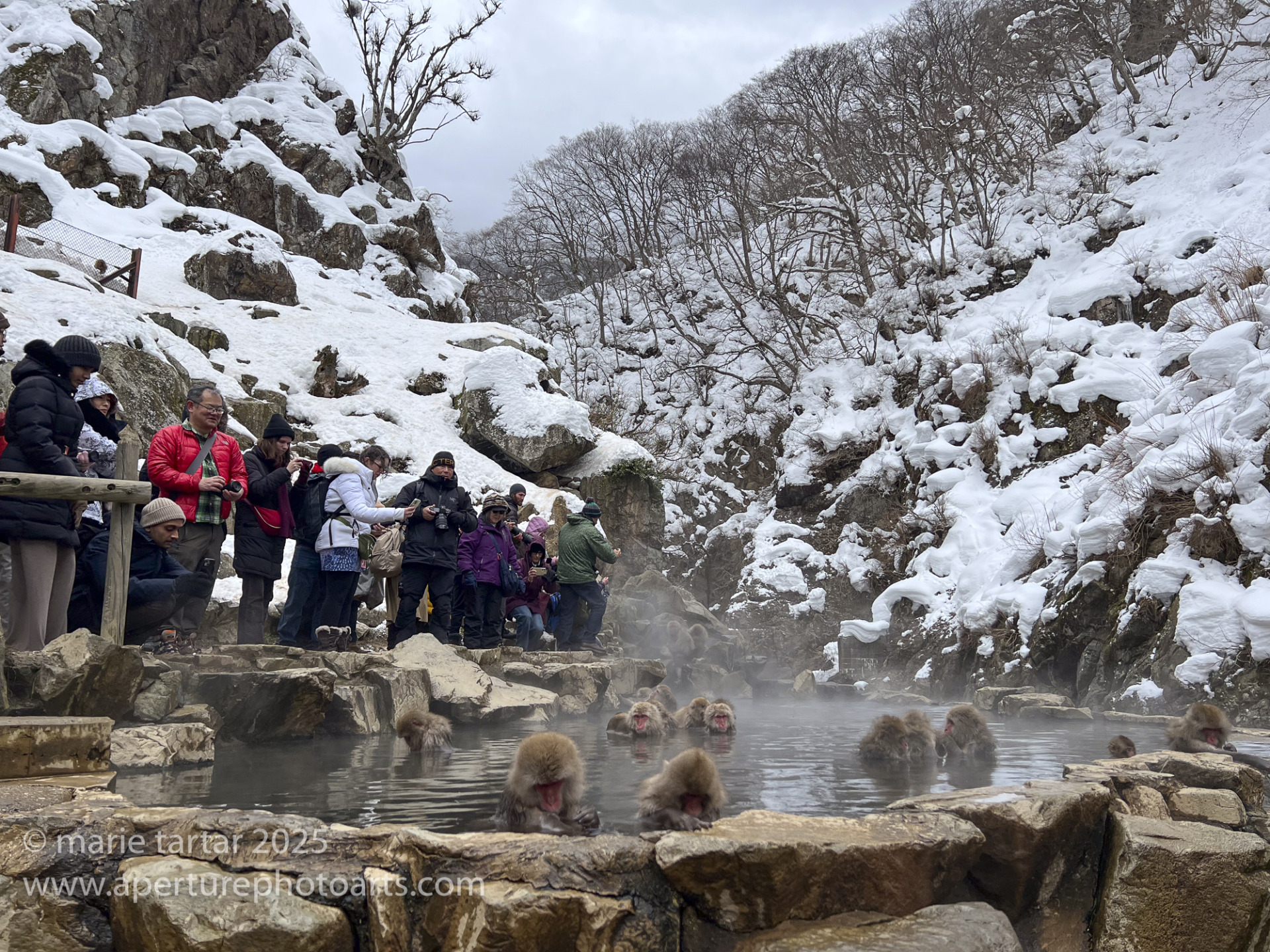
We had plenty of company at Jigokudani Monkey Park, which is a small area, but it was managable. (Iphone)
Back at the cozy hotel in the evening, we luxuriated in one of the outside onsens at the maze-like 400 year old ryokan, soaking away the rigors of 2 miles walking in snow, carrying tripods and camera gear. Random snow flakes drifted down on us, in crisp contrast to the perfectly hot water. A great day was capped by the excellent Japanese evening meal provided by the hotel.
Thursday, January 30, 2025
After a Japanese breakfast at 7:30, we loaded up at 8:15 for the few minute drive to the Monkey Park parking lot. With fresh snow deposited overnight, it was easier, more confident walking, boosted by switching to my over-the-boot micro-spike crampons, hastily acquired at REI just before our departure when we realized ours were safely a whole state away, in Sedona.
We spent all day at the monkey park, capping it off with a hot ginger tea for me and an apple turnover for Steve at Enza Cafe, down the hill from the monkey park, near the end of the walk to the waiting bus. Martin had pronounced Enza’s hot chocolate “the best in the world” but I had to politely disagree, prefering a less sweet, more liquid dark chocolate version, like in Paris.
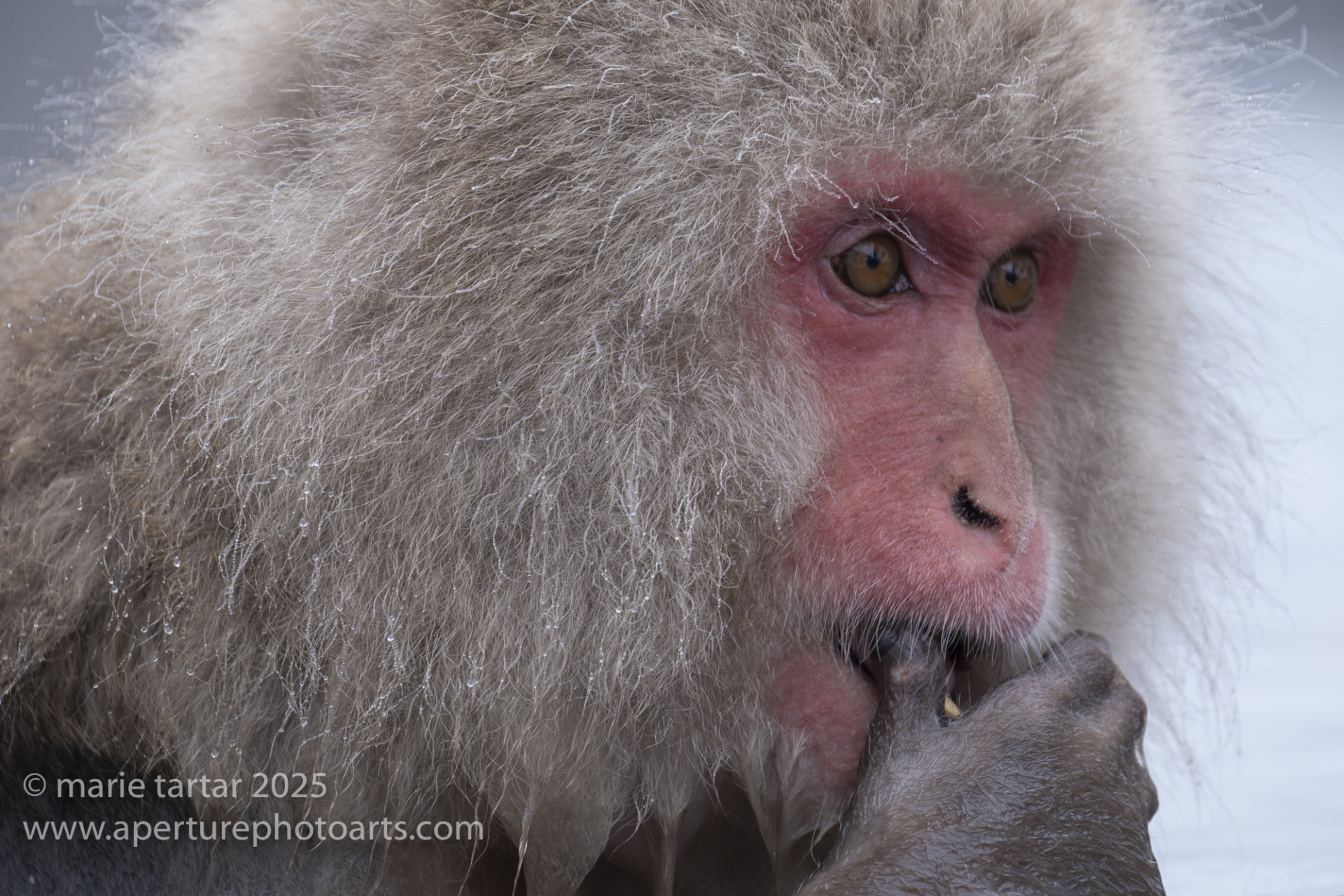
The simian equivalent of The Thinker? Actually, this snow monkey in Japan is feeding. Seeds are scattered by workers at the Park and are eagerly scooped up, in the pools, in the snow, off rails, wherever they land.
The caretakers scattering seeds in the snow caused an exodus from the pool.
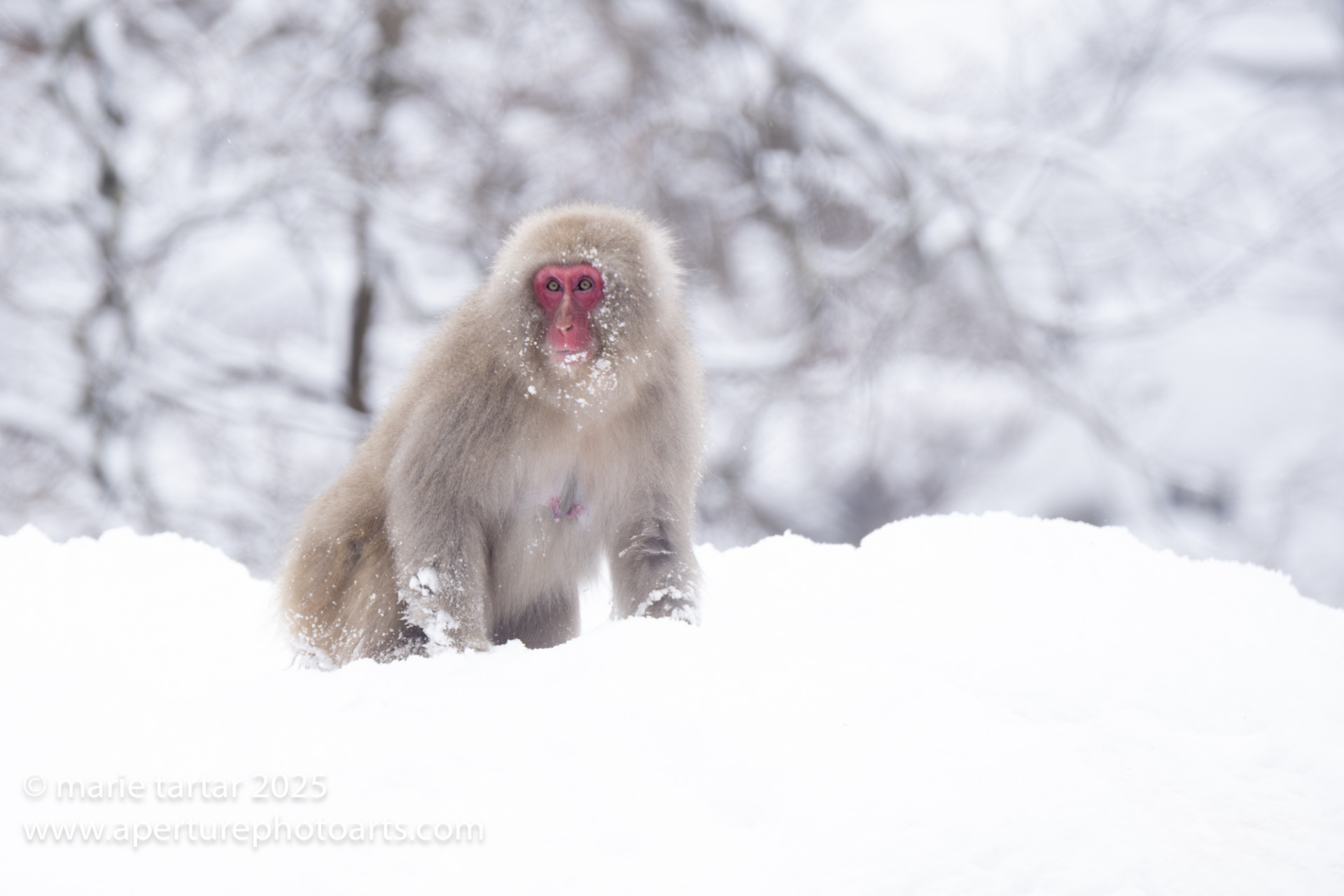
Japanese macaque pauses on a snowy bank, after scrabbling in the snow for seeds tossed out by caretakers at the Monkey Park in Japan.
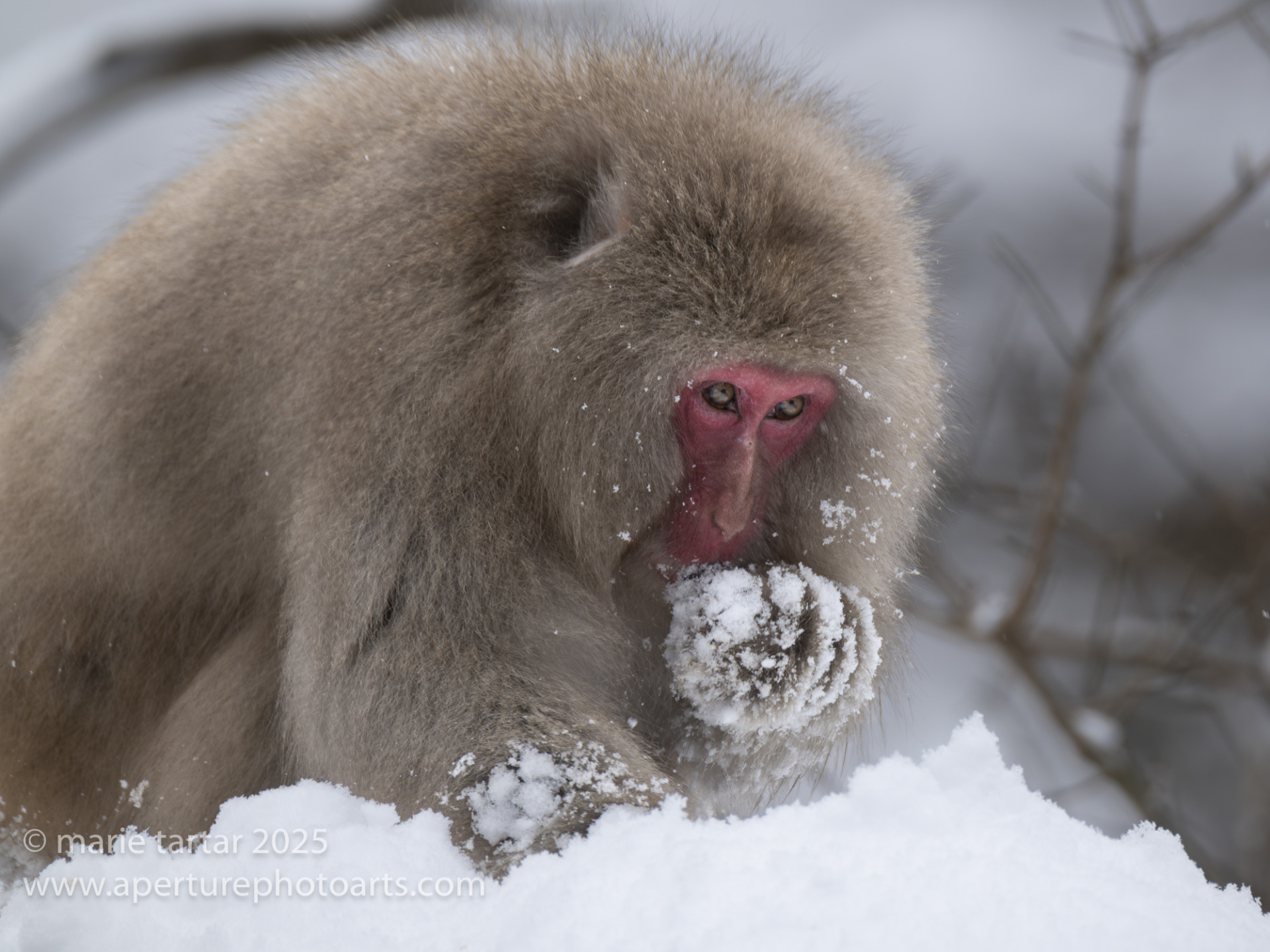
It looked like the snow monkeys were eating snow, but the seeds which landed in the snow, scattered by Monkey Park caretakers, seemed to be the real object of their foraging.
Back at the hotel, I managed to schedule an anma massage before dinner Luckily, I had prior experience with a blind shiatsu masseuse, years back on a Backroads bike trip on the Noto peninsula. The masseuse didn’t speak English and my Japanese was insufficient, but I guessed she’d want me on my side to start, as my last shiatsu massage was largely conducted. My 60 minute massage was 6000 Y, in cash. I only had four 1000 Yen notes, so I rounded out the sum with a 2000 Yen note, which I think the masseuse took to be a 5000 Yen note, as she handed me back three 1000 Yen bills after counting and recounting with her fingers the number of bills. Later, after verifying the amount with the front desk and guessing what had transpired, I gave the 3000 Yen still owed her to the front desk person to give to her on her next visit.
Our evening meal at the hotel was enhanced by a koto performance by the inn hostess, including a tune newly learned for the occasion: “Happy Birthday ” for RC (81 years old).
Friday, January 31, 2025
After our final morning walk through the snowy forest on the packed snow and muddy road for a last session with the snow monkeys, I decided to concentrate on shooting video. Even after I folded up my tripod and started the walk down the hill toward the carpark, a cavorting group of monkeys playing in the snow, chasing and jumping on each other, brought me to a halt again, and out came the equipment.
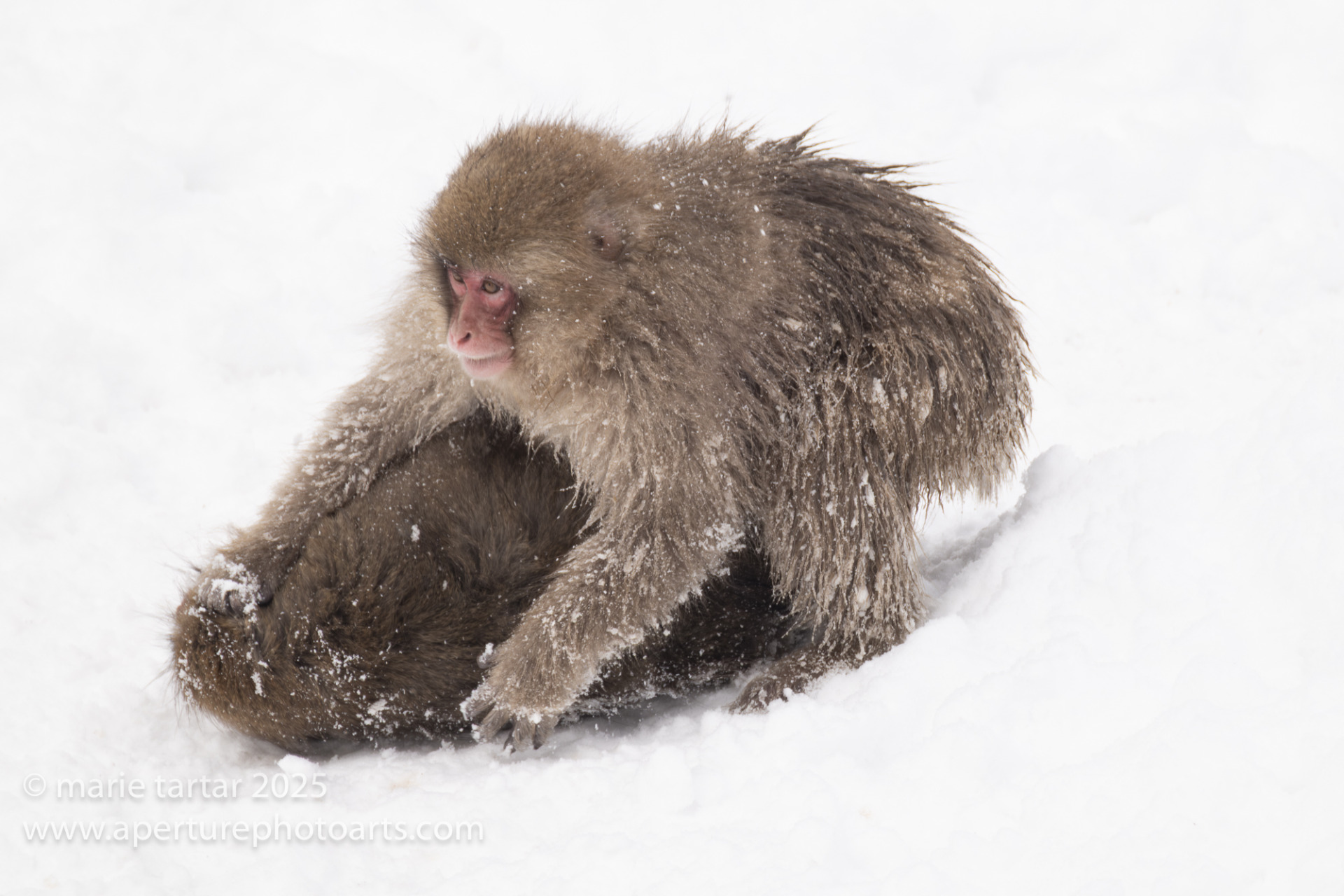
Monkey business! Rolling in the snow, tumbling over each other, hopping onto backs and into trees, snow monkeys looks like they are having a blast.
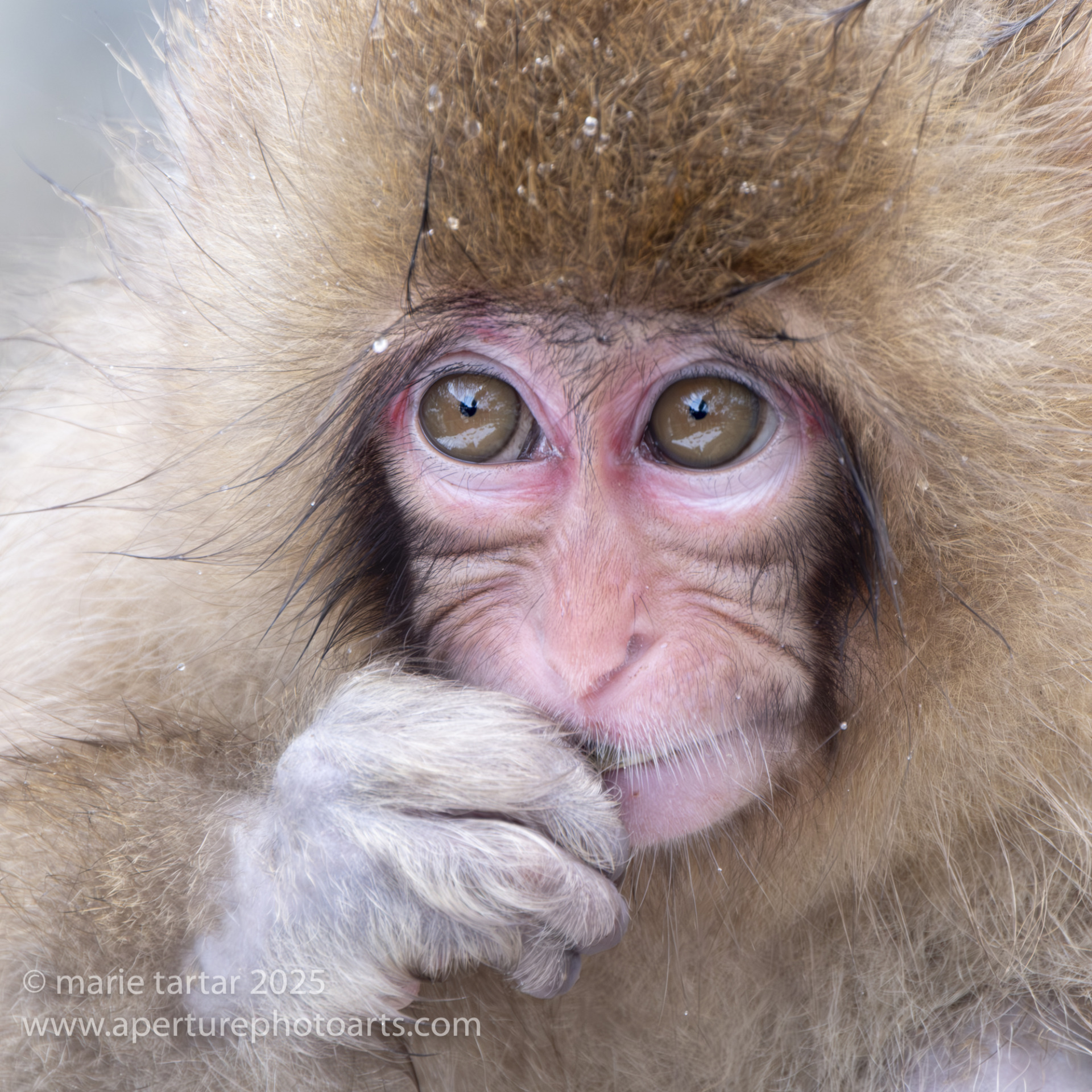
Probably my favorite snow monkey portrait from this trip, this baby macaque has it all over in the cuteness quotient.
RC and Donna, Robin and Paul walked around town instead of a third monkey trek and photography session.
Our ride back to Tokyo and Haneda Excel Hotel was broken up by a nice lunch in nearby Obuse Town, including a local specialty, chestnuts imbedded in rice.
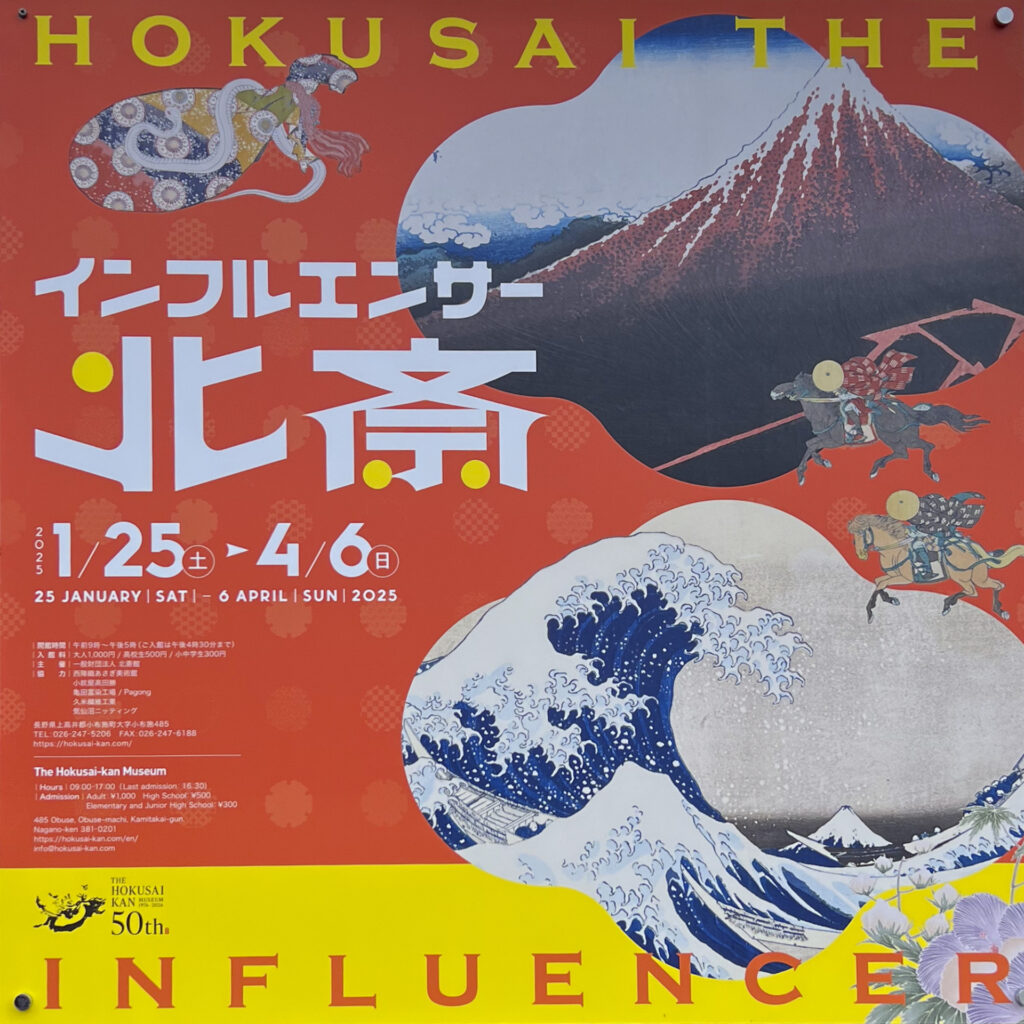
A Hokusai the Influencer poster in the parking lot in Obuse cracked me up. Katsushika Hokusai’s Great Wave probably is one of the most riffed on graphics of all time.
This drive gave me a chance to make some progress listening to Lisa See’s Lady Tan’s Circle of Women, which is terrific. It is based on the life of a Ming Dynasty female physician, Tan Yunxian. Set in China in the 15th century, Lady Tan is a member of a family of traditional doctors. When she marries, she is forbidden to practice but does so clandestinely. Her childhood friendship with a midwife’s daughter takes many twists and turns of fortune as their adult lives evolve.
The following morning, we were off early on a flight to Hokkaido, on a trajectory to intersect with red-crowned cranes, whooper swans, sea eagles and even a Ural owl…coming up in a future installment. Here’s some previews:
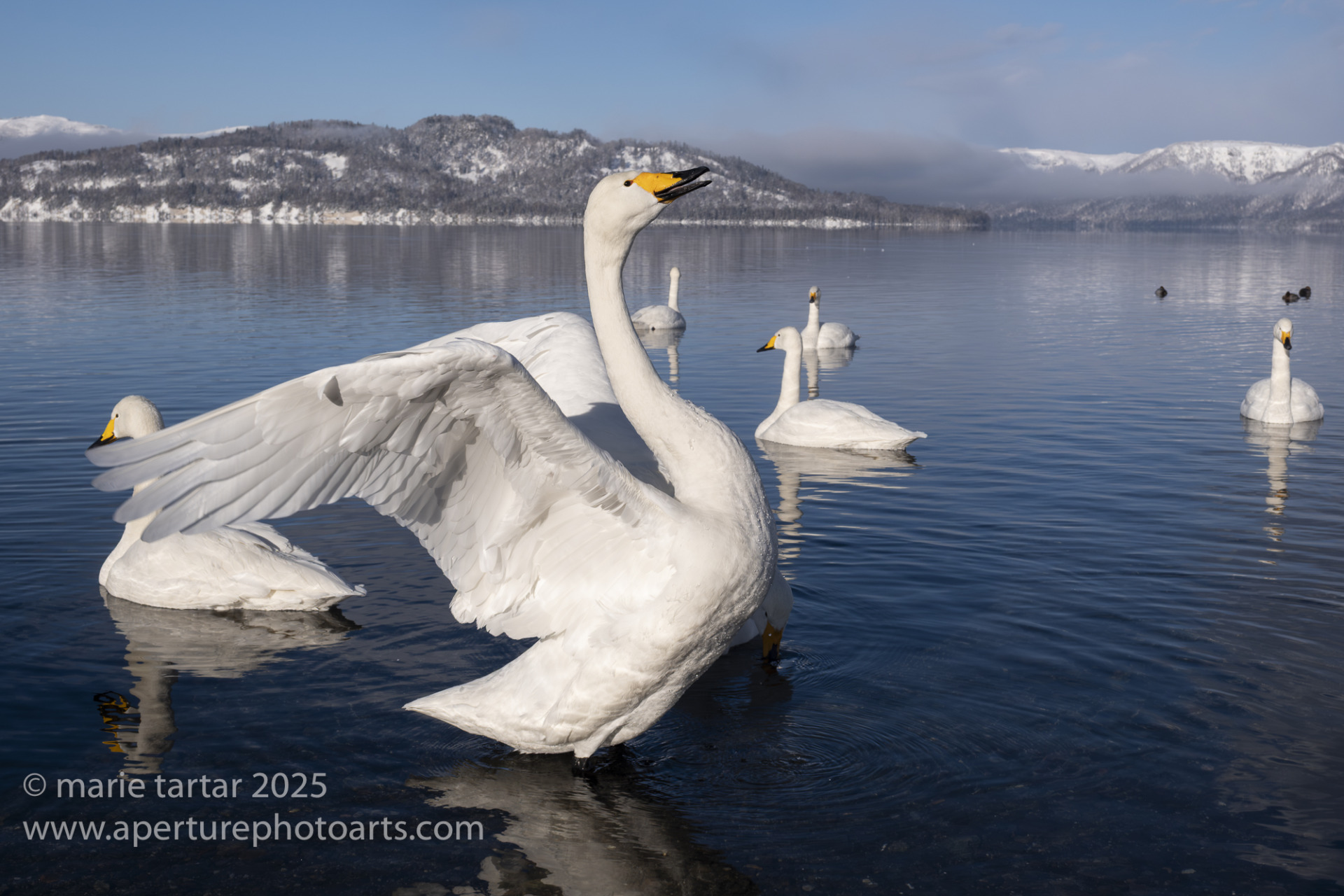
Yet more reasons to go to Japan in winter: Whooper swans on a sunny morning on Lake Kussharo as the mist burns off.
-Marie

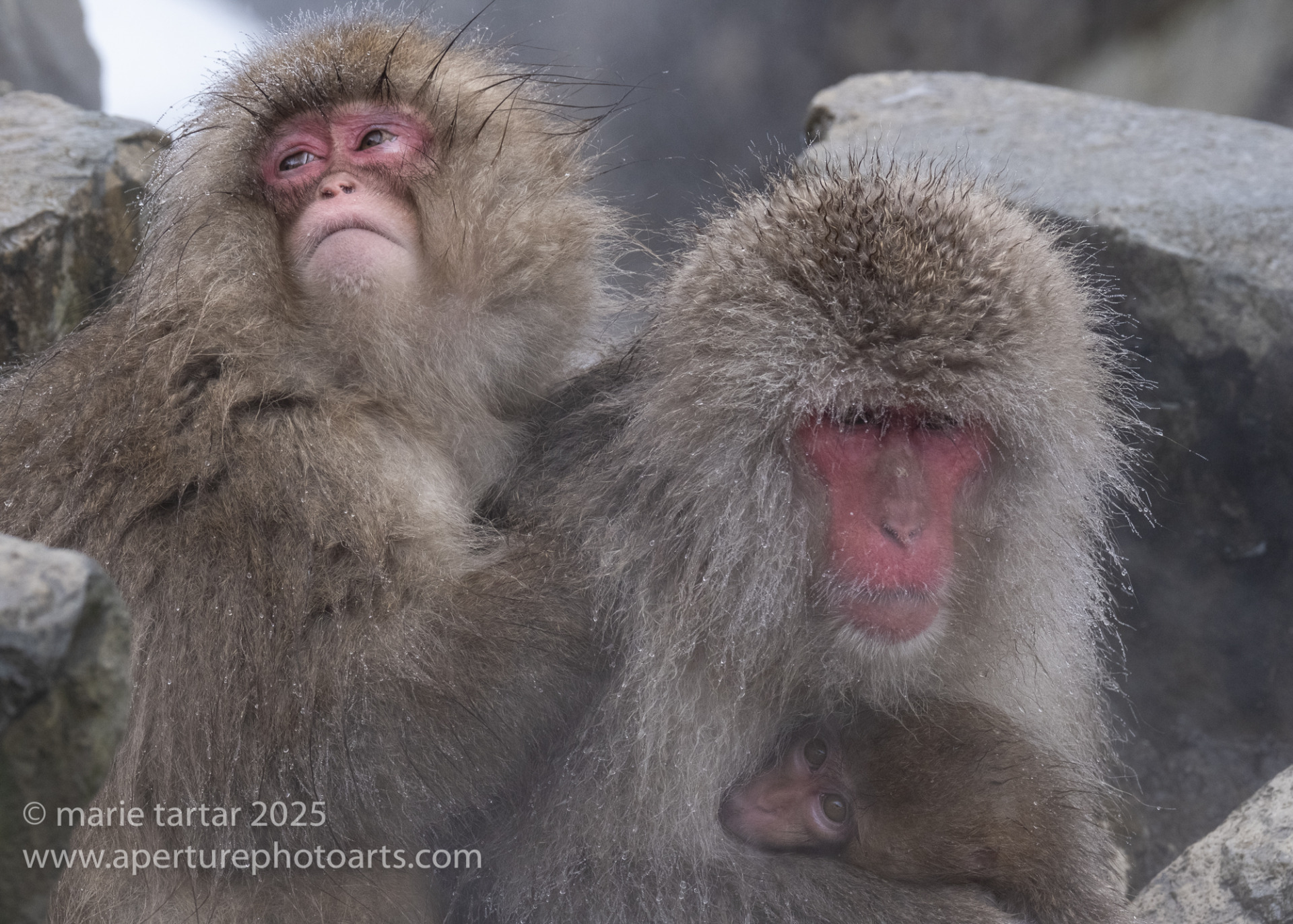
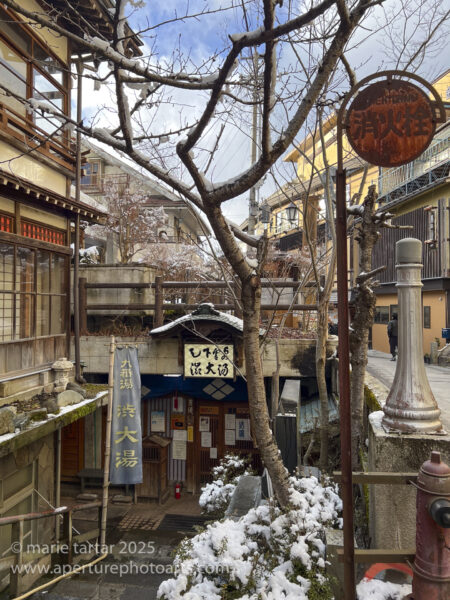
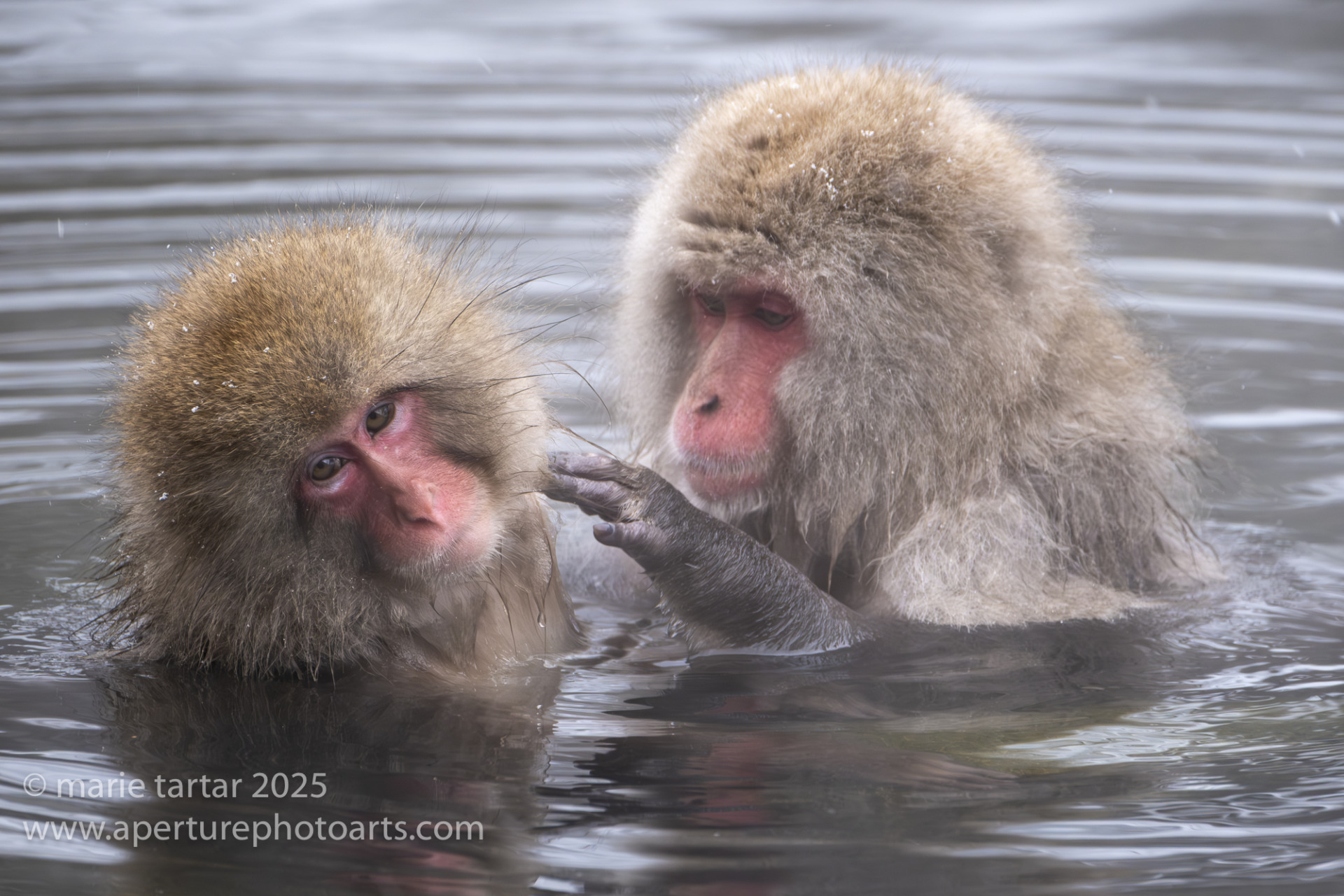
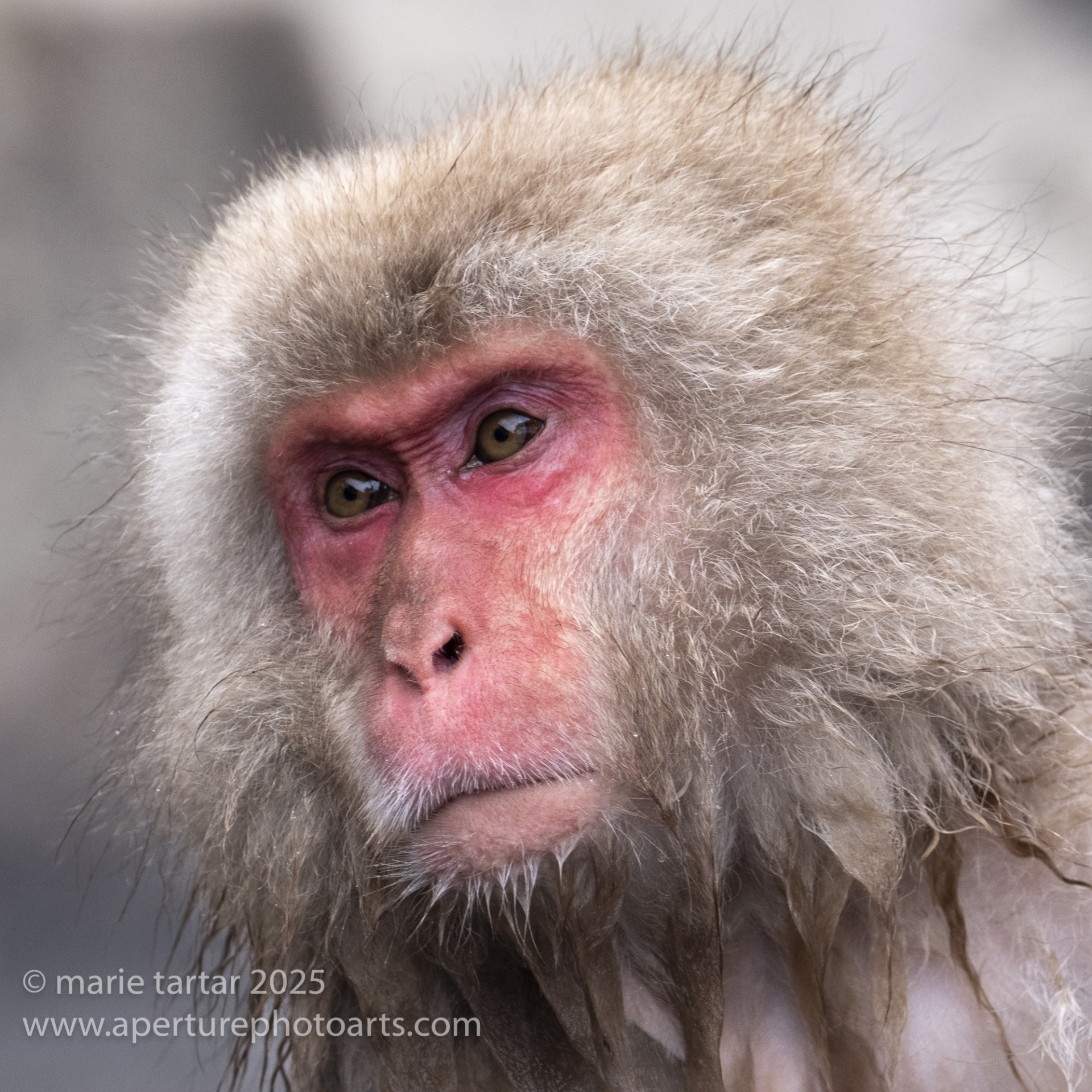
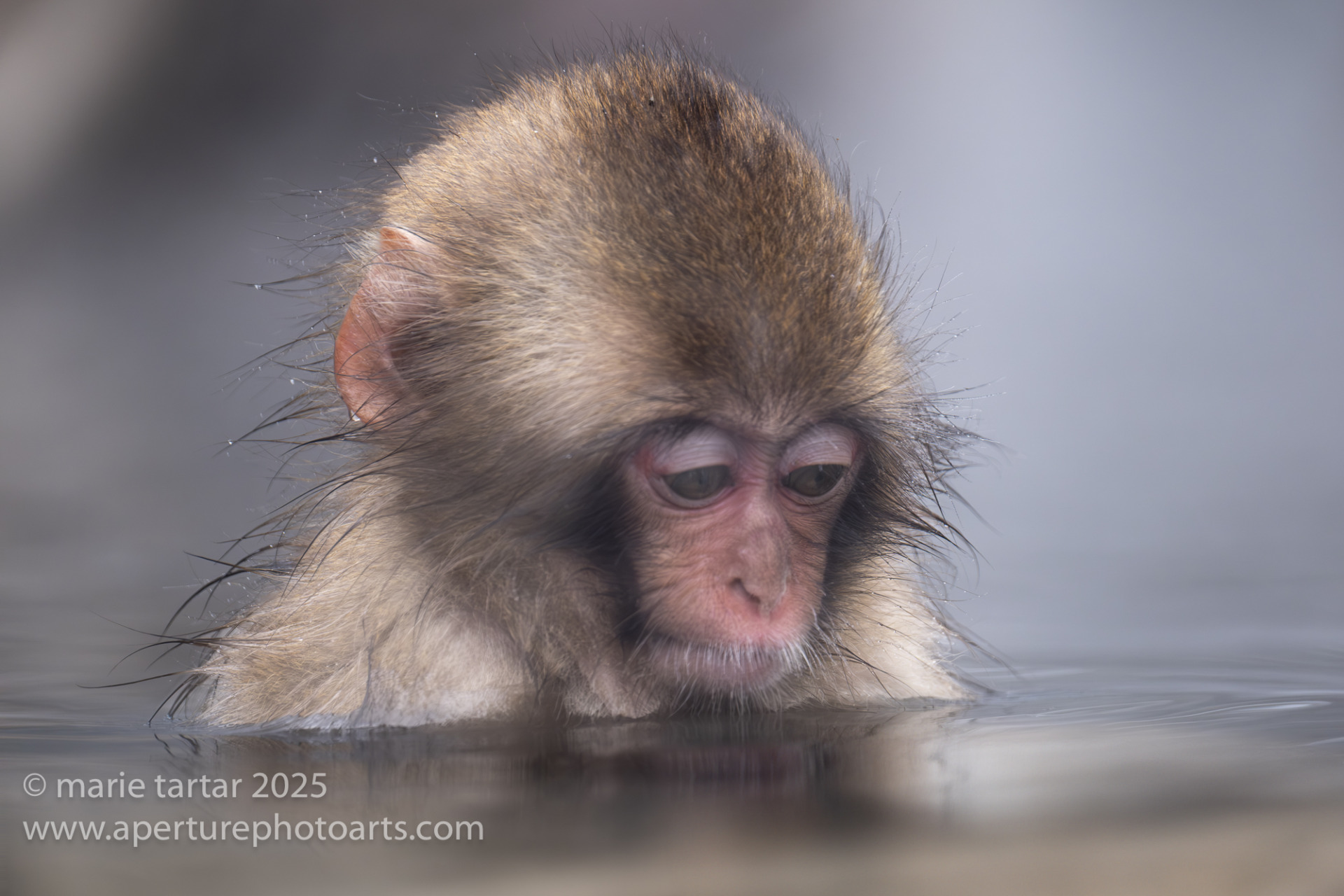

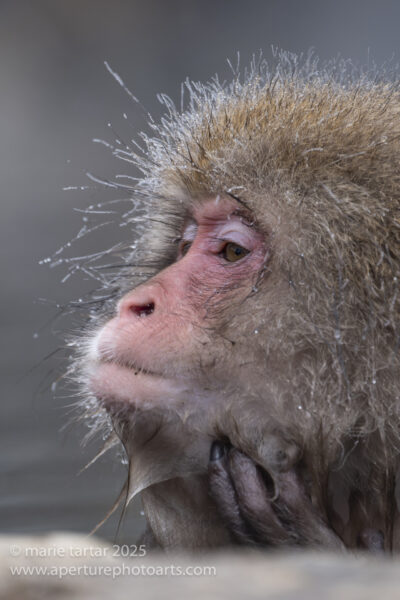
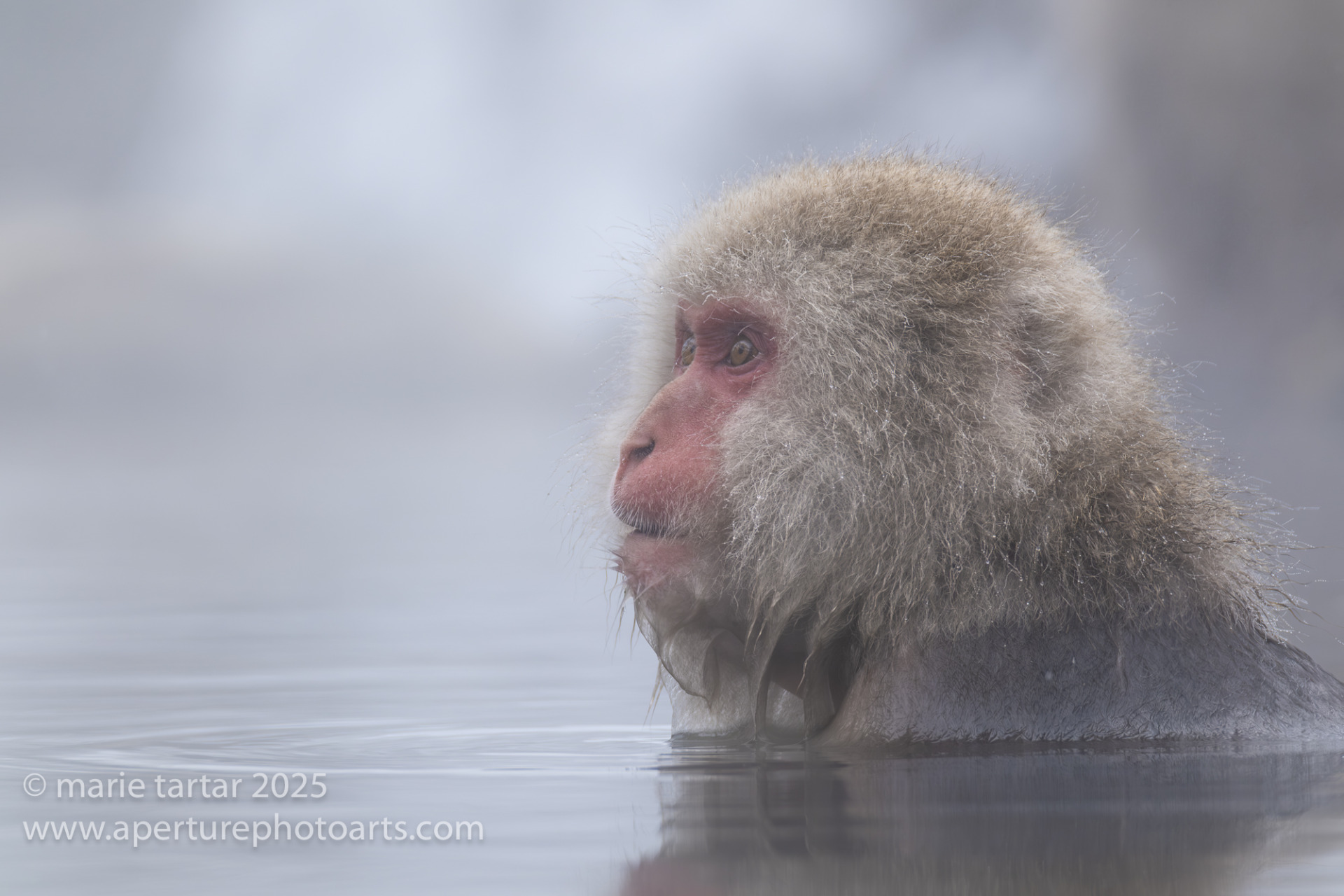
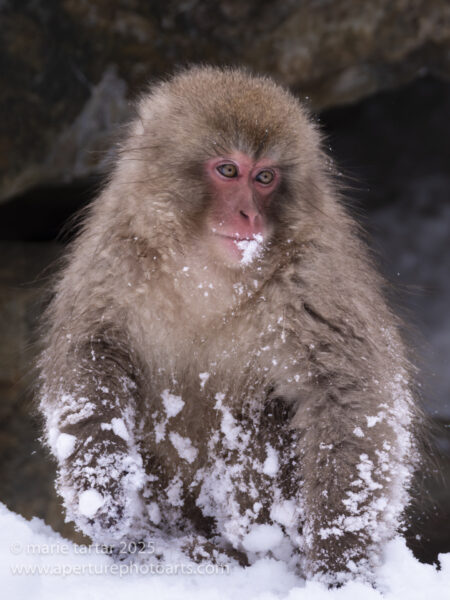
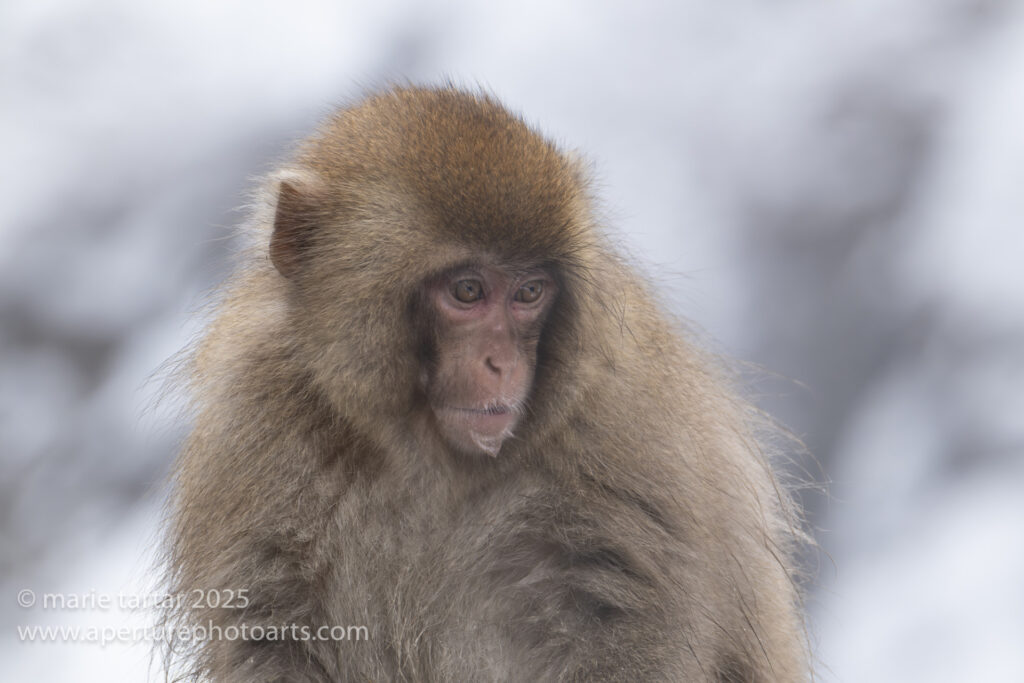
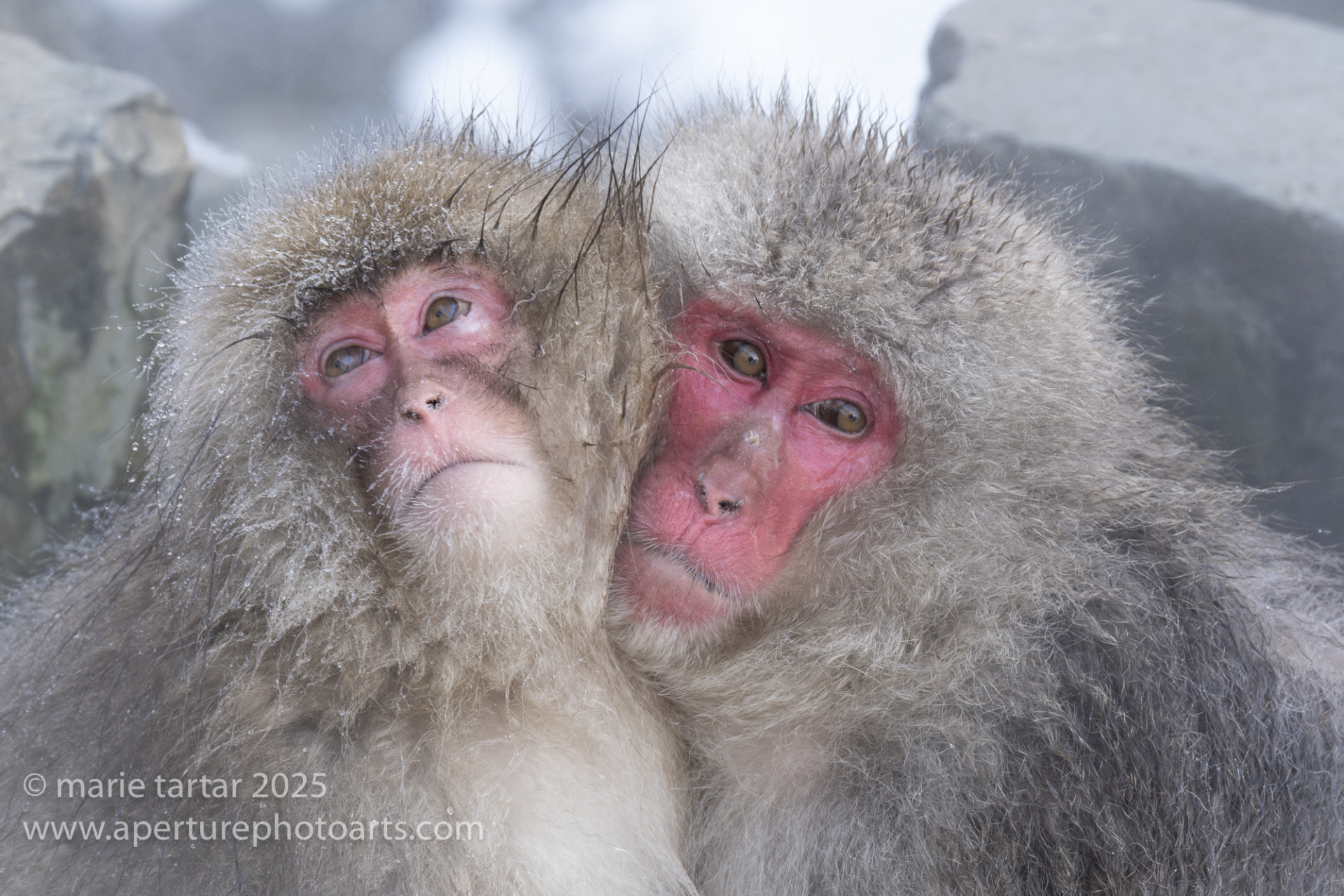
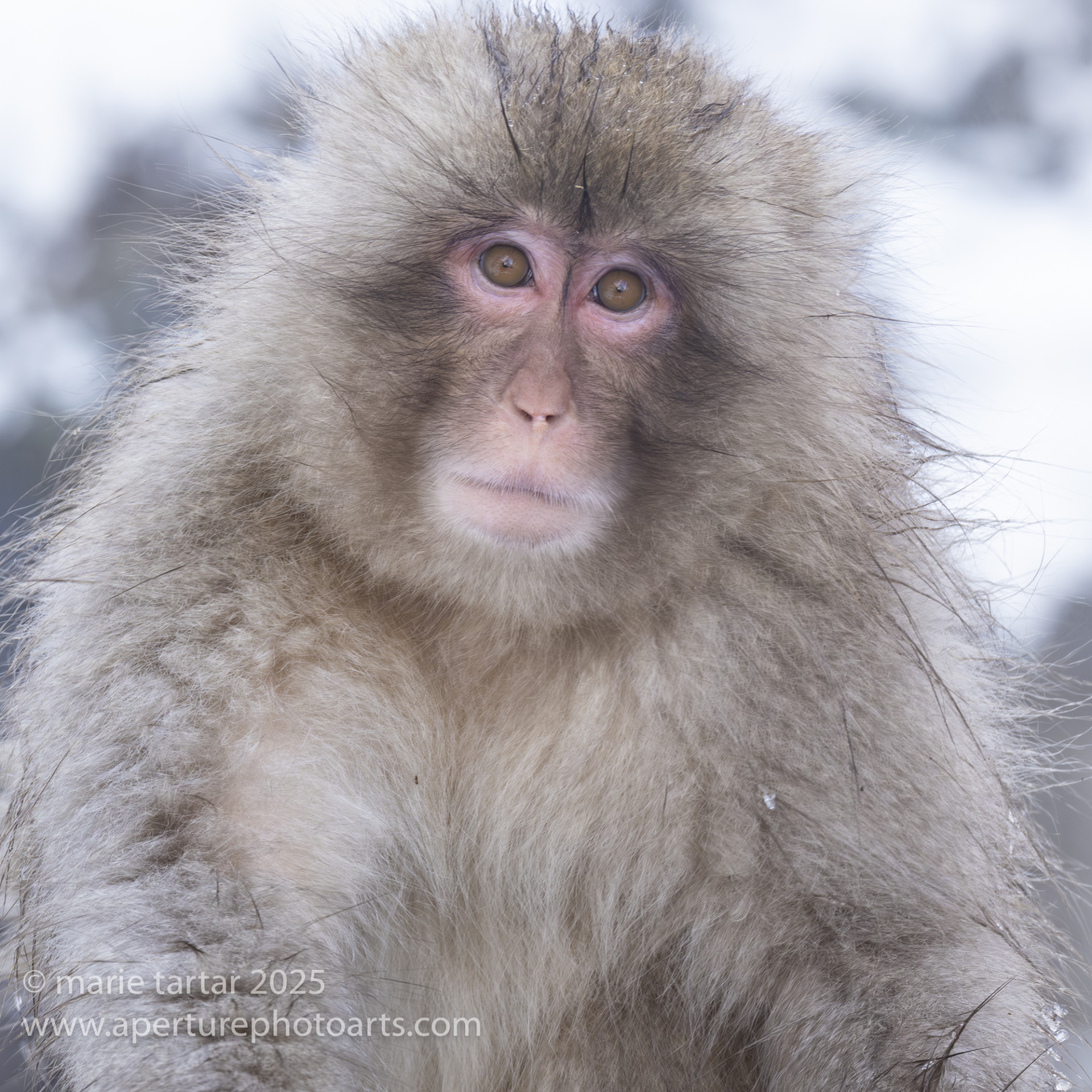
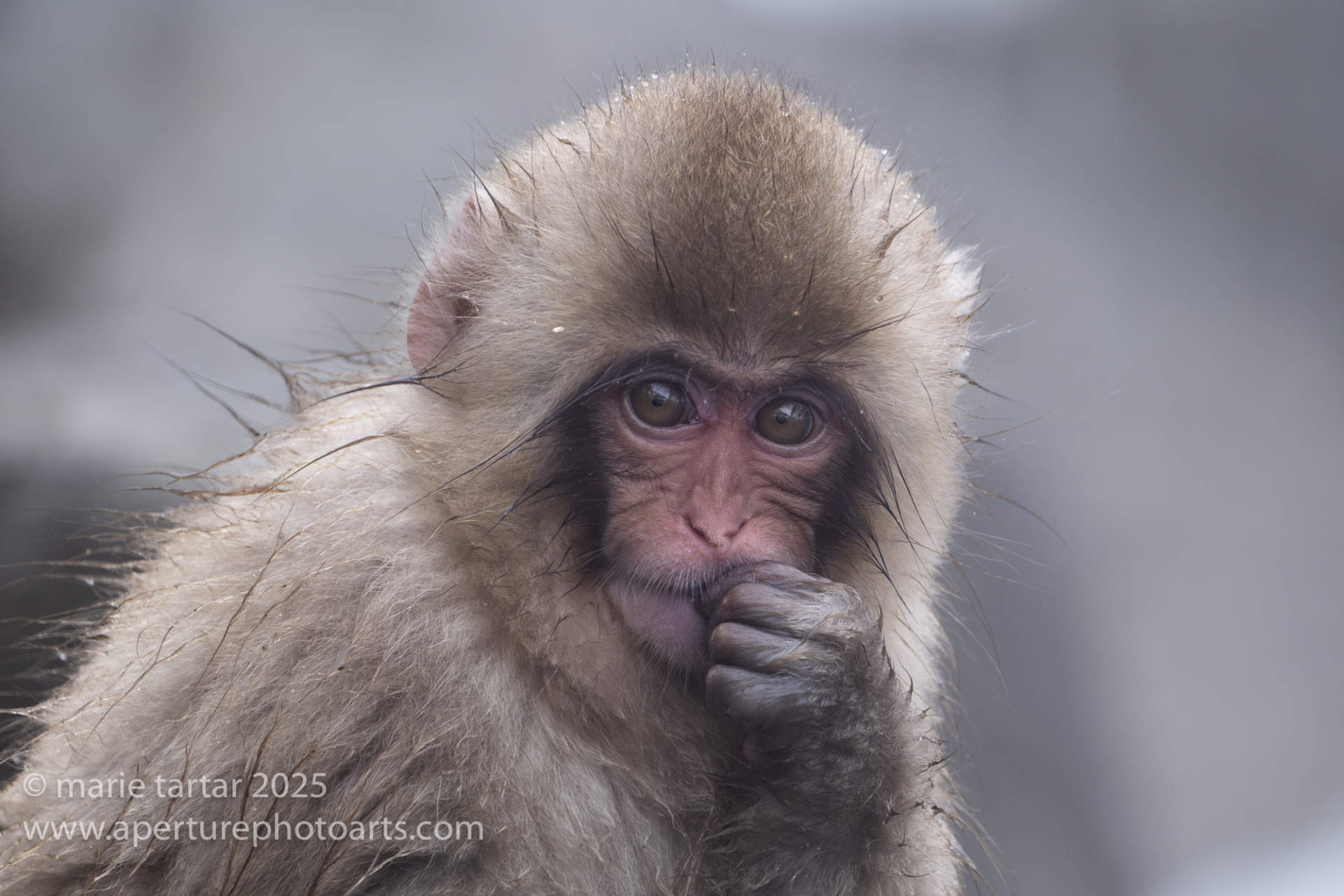
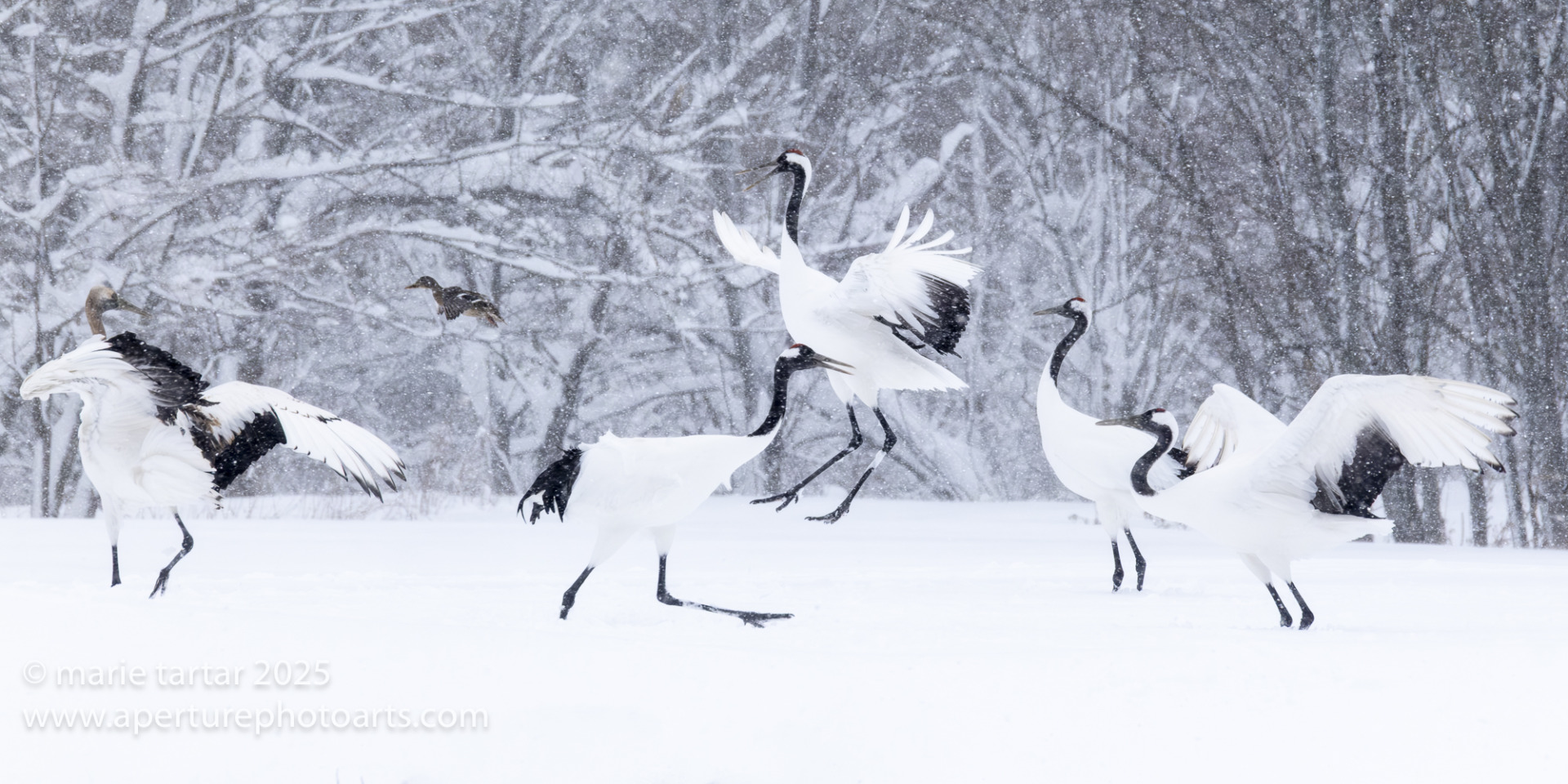
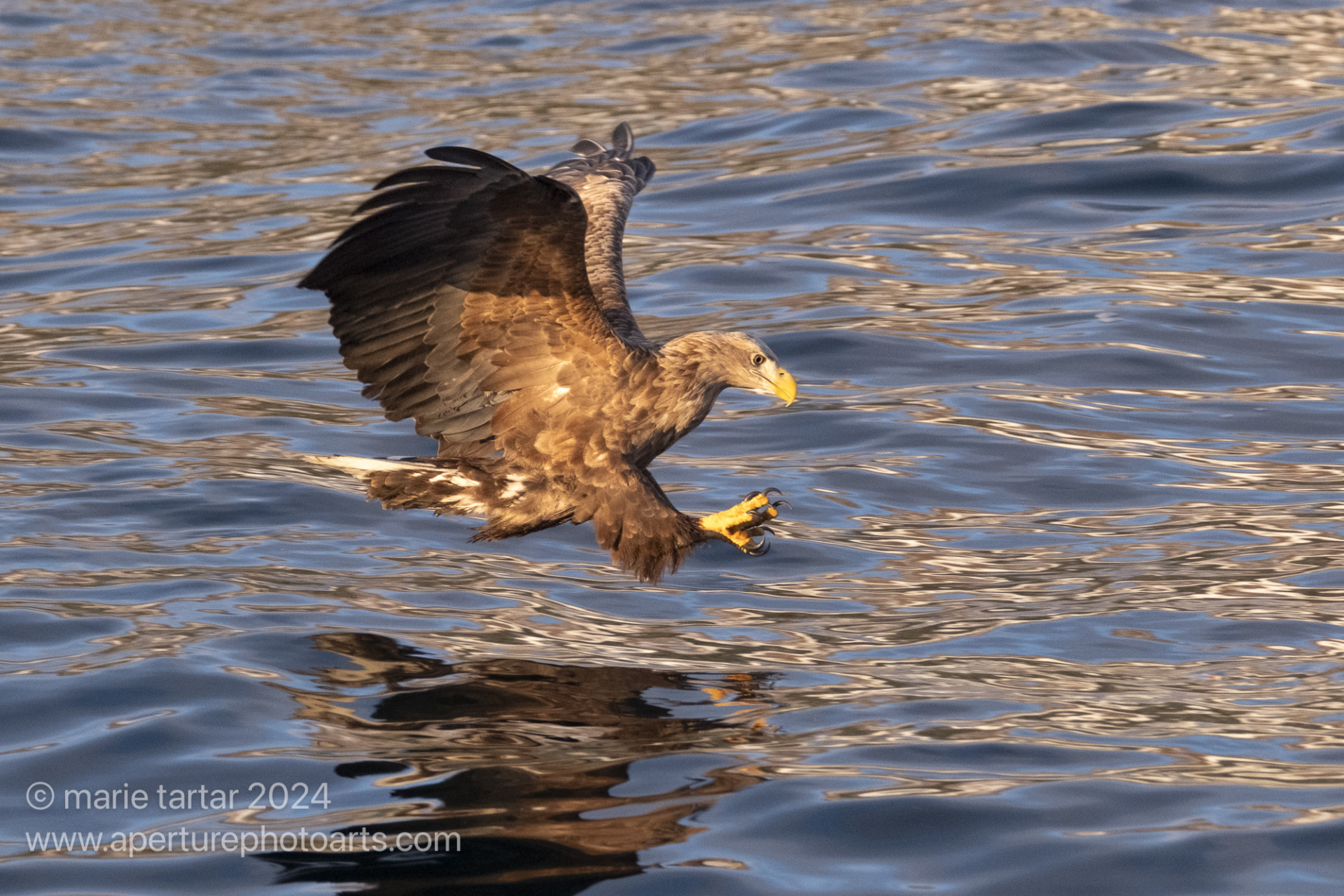
Wow… your selection of images were a perfect accompaniment for your stories.
Thanks you for taking us along on your adventures.
Such a great trip! Magical sights and memories,
-Marie
Spectacular photos & commentary! What an incredible adventure.
It was really wonderful, thanks for coming along!
-Marie